Oh my, the last 42 days have passed in a whirlwind of picture-perfect cityscapes and crumbling fortresses. We began our 80-day lease with Renault in Calais, France, and since that day have spent at least one night in 17 different cities and whiled away afternoons in many more.
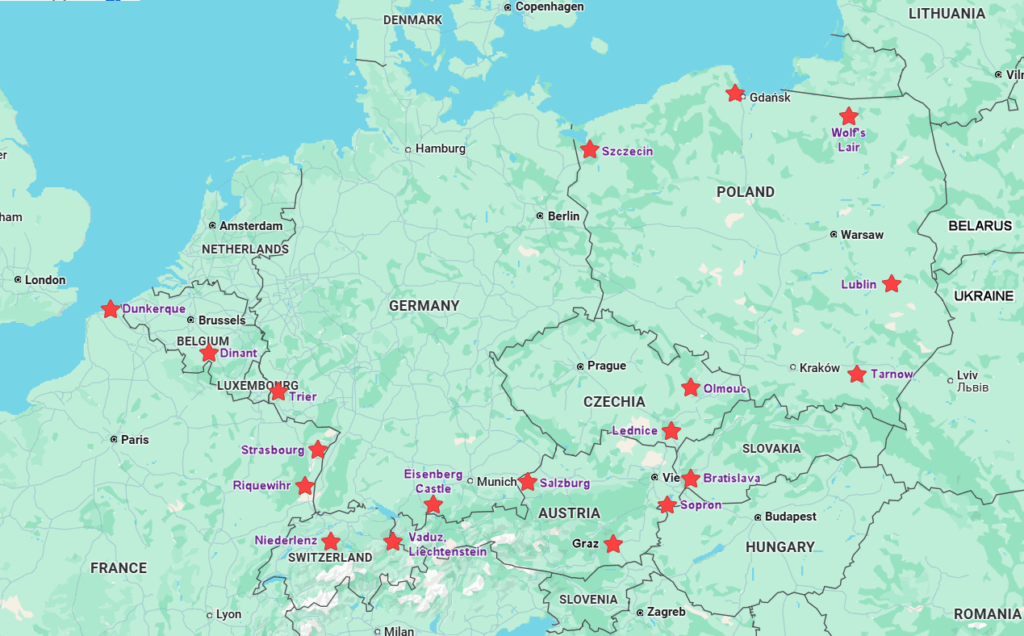
This is the second time we’ve leased a vehicle through Renault, and although the price has gone up somewhat since 2022, it is still less expensive than a standard car rental, and the overall experience is worth every penny. Three years ago, road tolls took a toll on our budget. This year we used the “Avoid Tolls” option in Google Maps when we plotted our routes, which did marginally increase the time behind the wheel, but the narrow winding backroads and small enclaves we passed through made for a far more captivating drive!
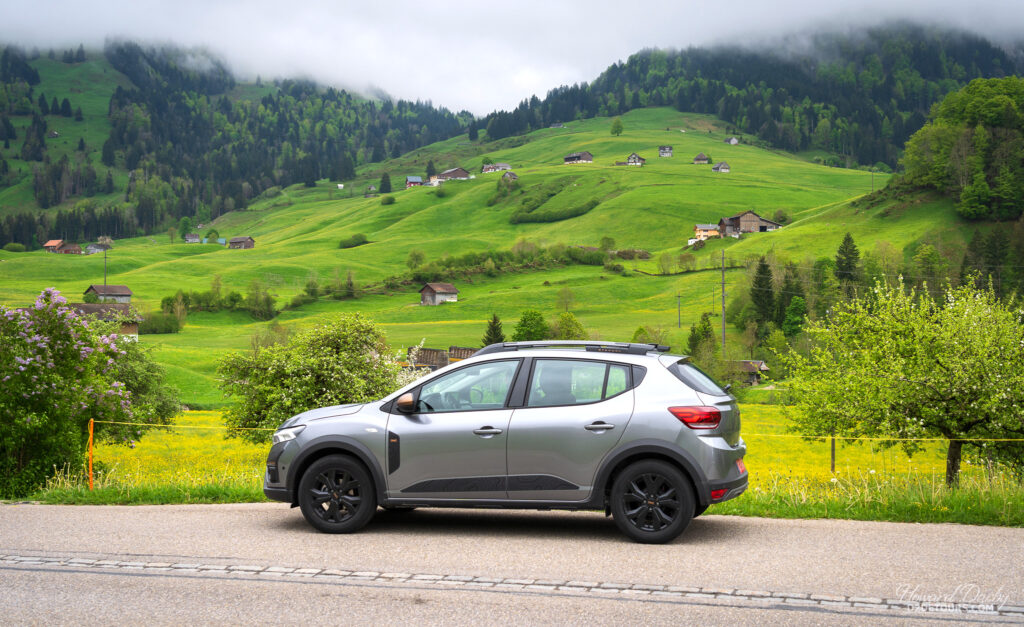
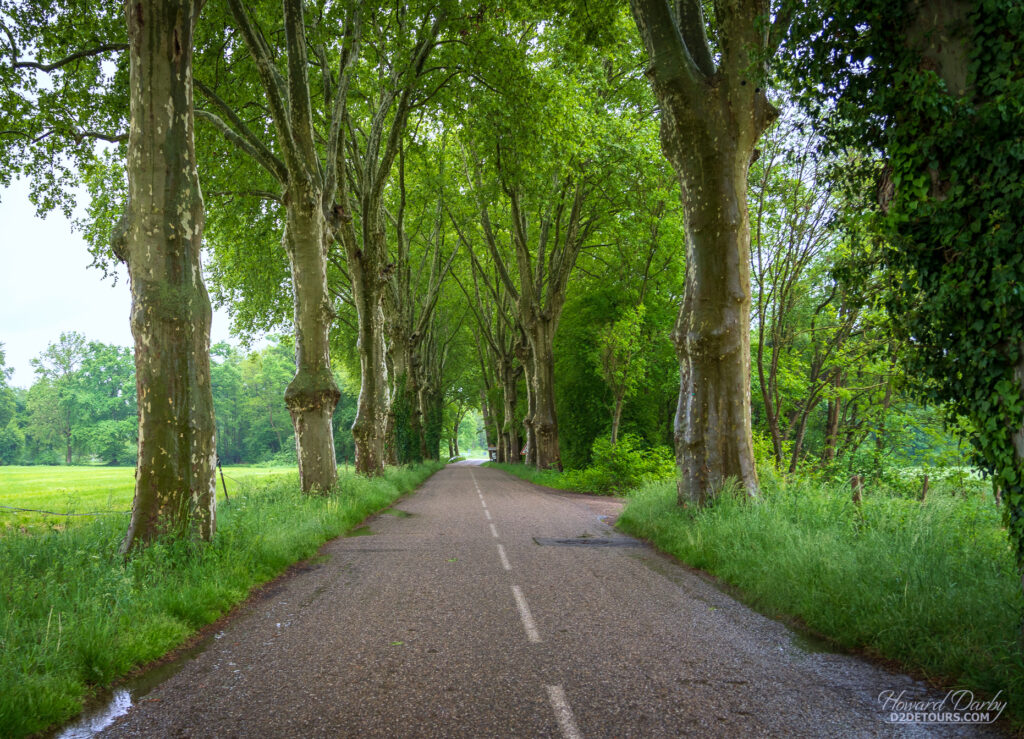
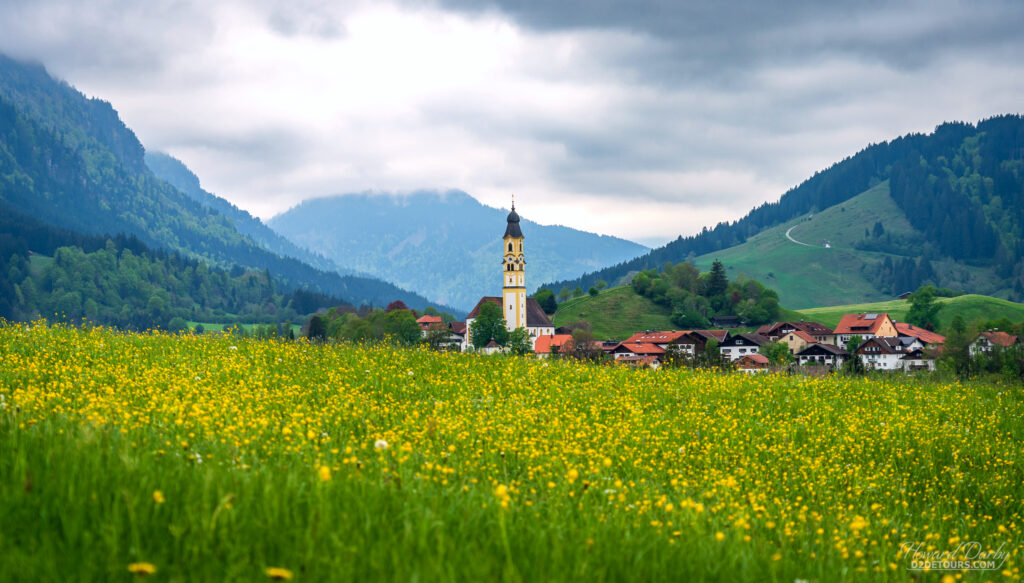
German towns/villages, and to a similar extent Austrian and Swiss towns too, are impeccable. Not a blade of grass is longer than it should be, not a speck of paint is peeling from homes or fences, no flower basket is in desperate need of deadheading, and I’m firmly convinced someone must be sweeping the roads and sidewalks after every passing car. There is an abrupt difference when you cross the border into the Czech Republic or Hungary.
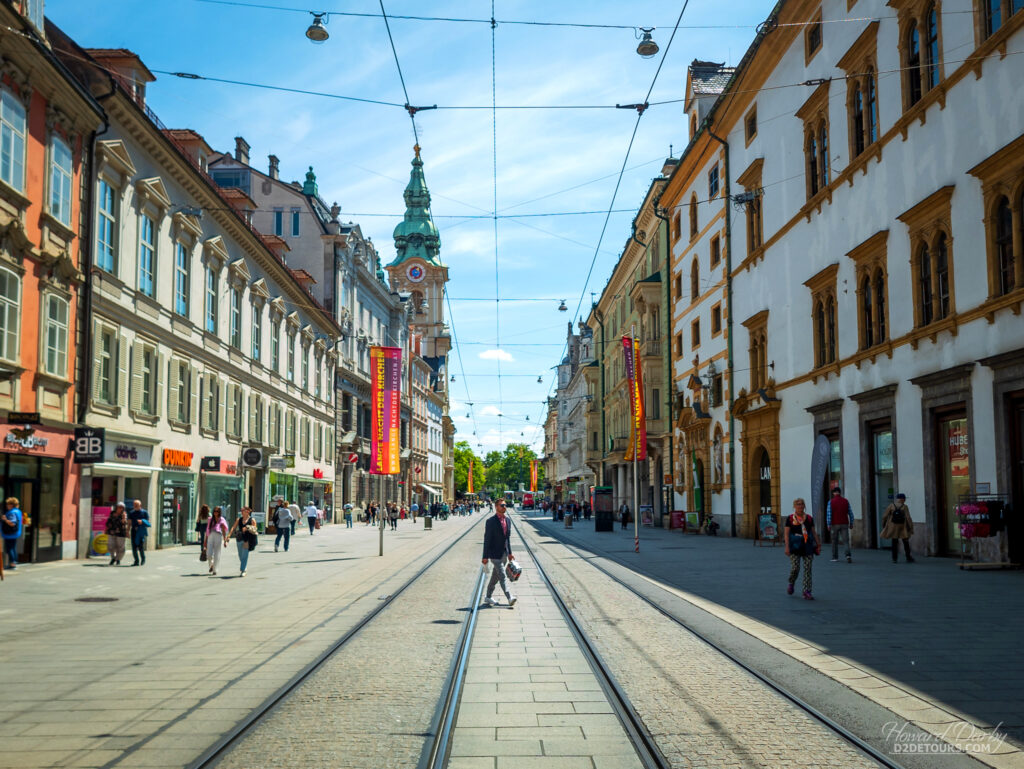
Given the number of streets, pathways, and town squares through which we’ve wandered these past weeks, you can imagine the number of photos Howard has accumulated. These are his favourites, accompanied by an occasional history lesson.
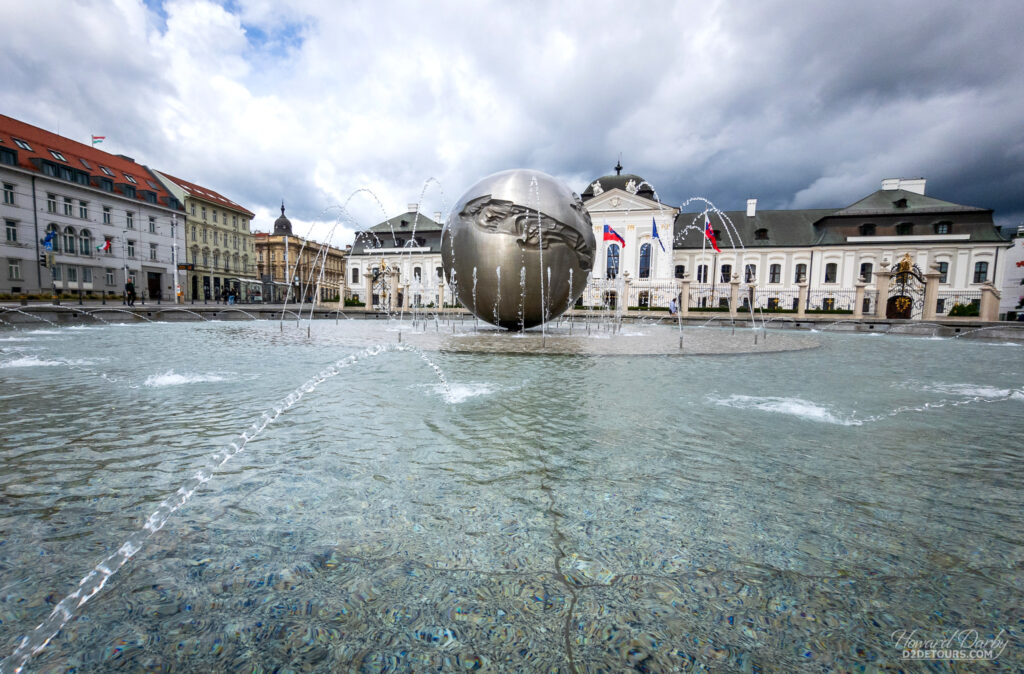
In 960 CE, walls were erected to protect the tiny fishing village of Dunkirka from Viking raiders. Hostile forces from the sea were not the problem in 1940. The Miracle of Dunkirk, a hastily thrown-together plan to rescue Allied troops being crushed by advancing German Panzer units, evacuated nearly 400,000 soldiers from the beaches and harbours of Dunkerque, France, over nine days in May/June 1940. Lives were saved, yet the Allied forces were left with no choice but to abandon nearly all of their tanks, vehicles, and equipment.
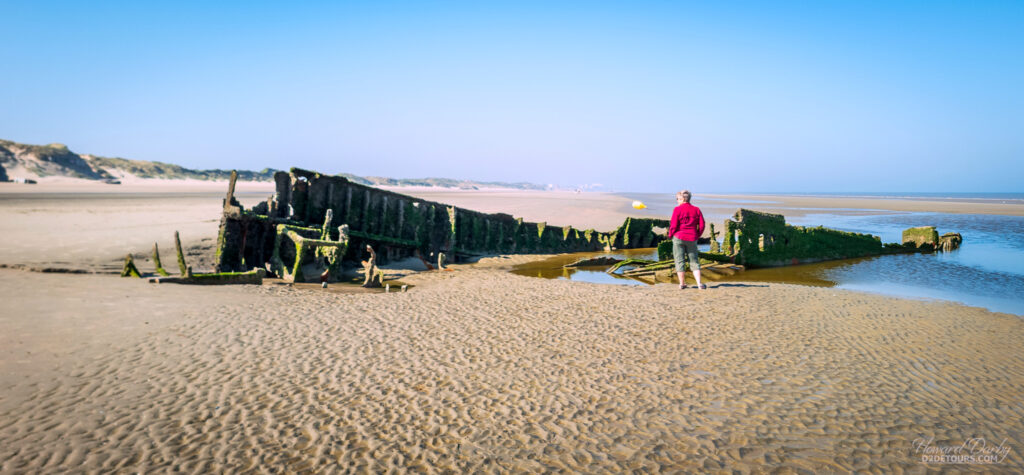
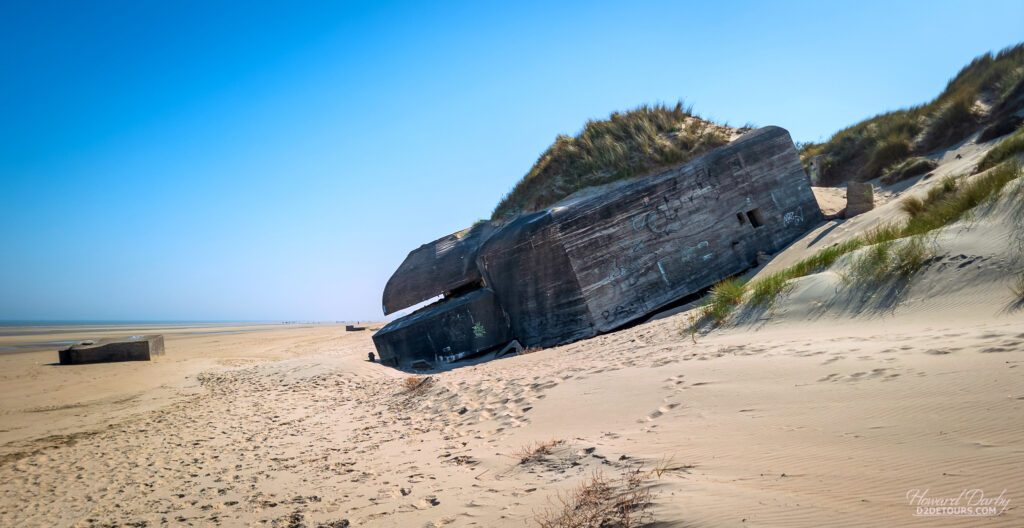
The high price tag of accommodation in Dinant, Belgium proved to be a stroke of good luck, as we discovered the utterly enchanting hamlet of Crupet, about 20 miles north. We stayed in a beautifully converted old flour mill next-door to a fortified farm-chateau, and spent a few hours the next day meandering along the riverbank in Dinant.
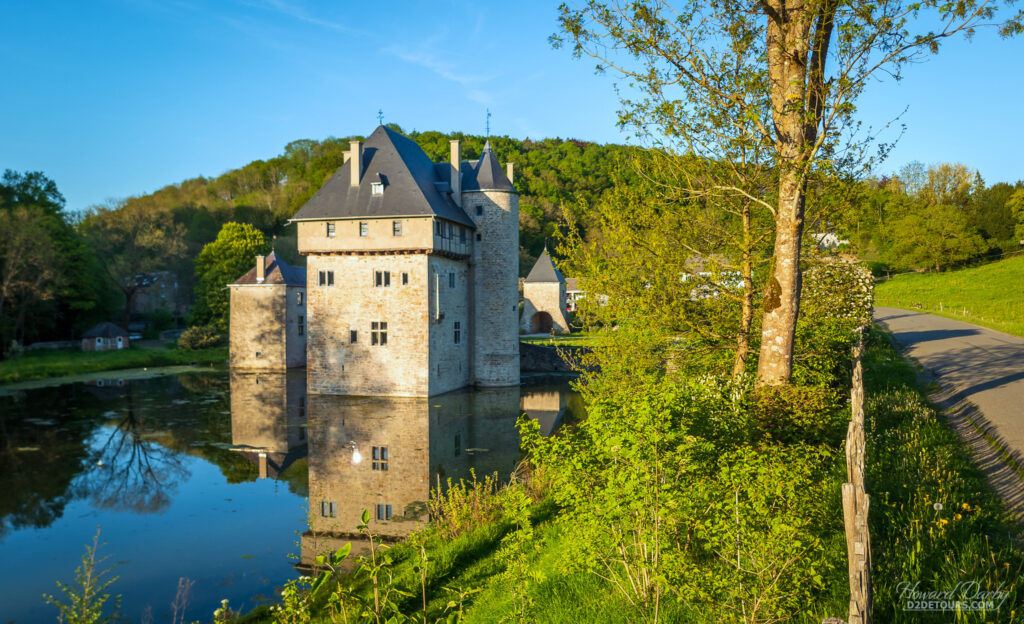
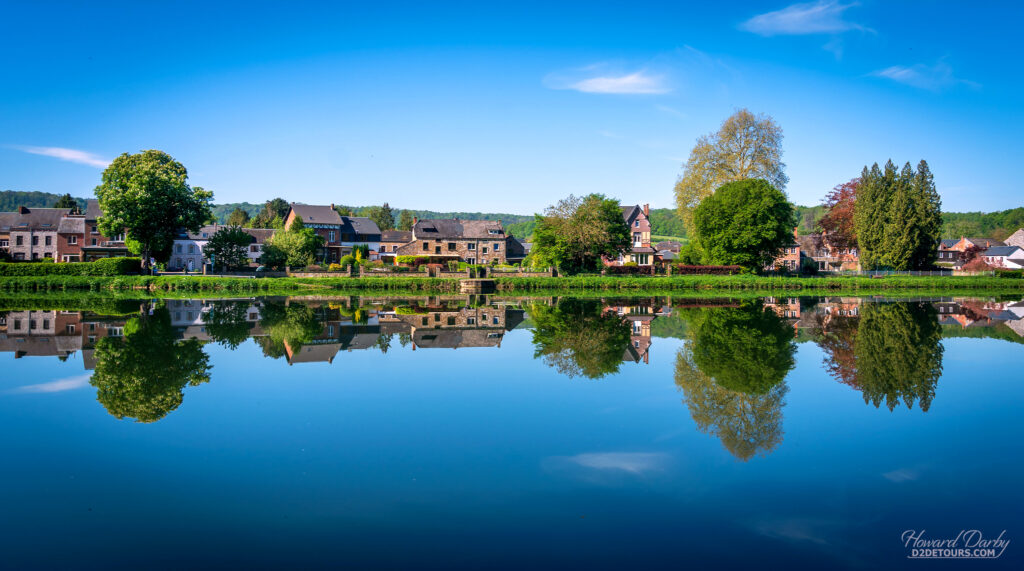
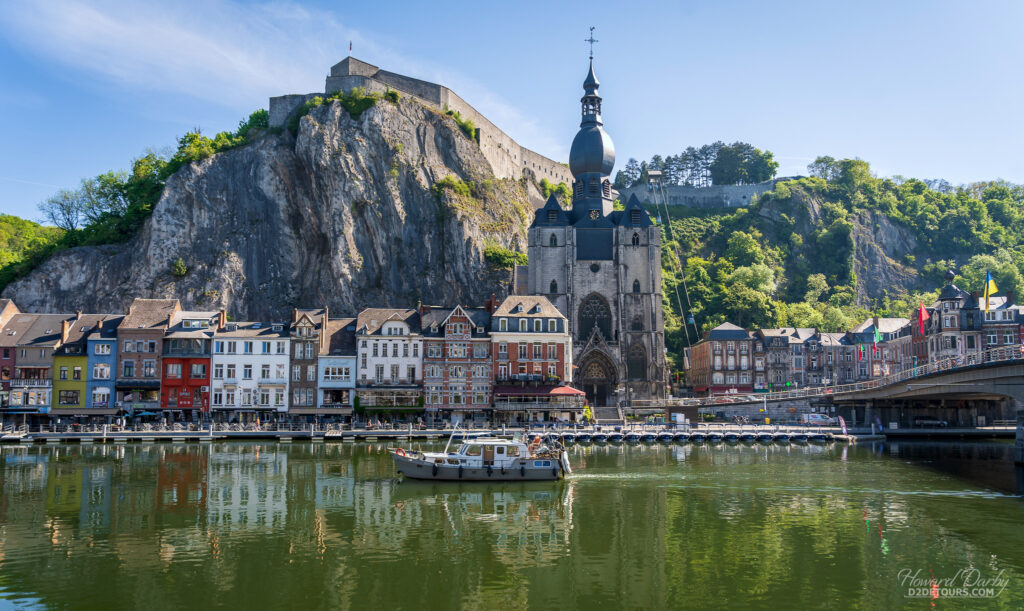
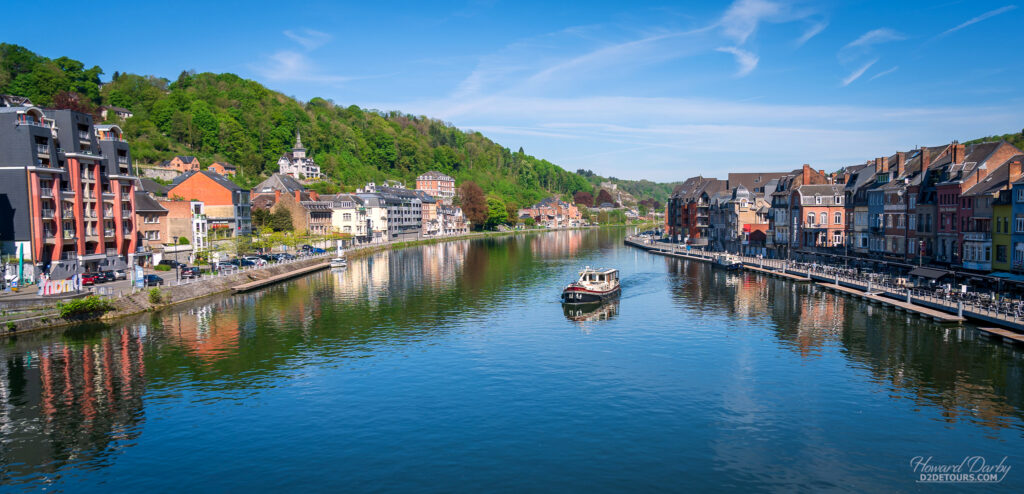
Trier is considered the oldest town in Germany. Founded by the Romans in the late first century BCE, it is a treasure trove of, you guessed it, Roman artifacts! By the 4th century CE, Augustus Treverorum was one of the largest cities in the Roman Empire. The Porta Nigra / Black Gate (so named in the Middle Ages as time and weather had darkened the original grey sandstone) dates from that era and is the best-preserved Roman gate north of the Alps. It owes its preservation to being repurposed as a church in the 11th century. In 1804, when Napoleon descended upon the city, he ordered that the church be dissolved and the gate reconfigured back to its Roman roots. As an accompaniment to the monumental structures around the city, the Rheinisches Landesmuseum houses a massive collection of Roman relics and some stunning examples of mosaic flooring.
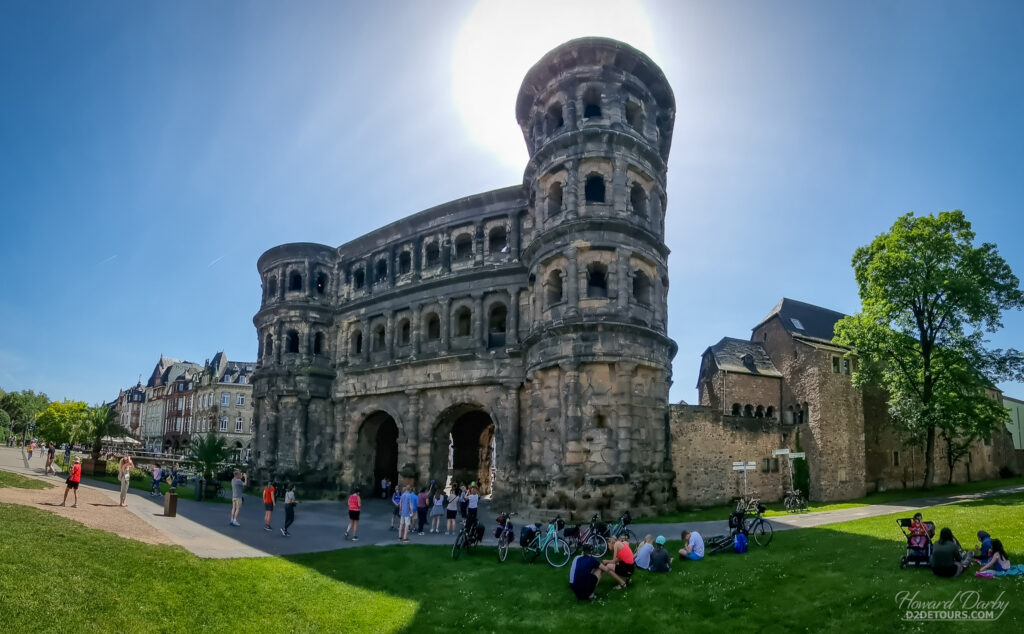
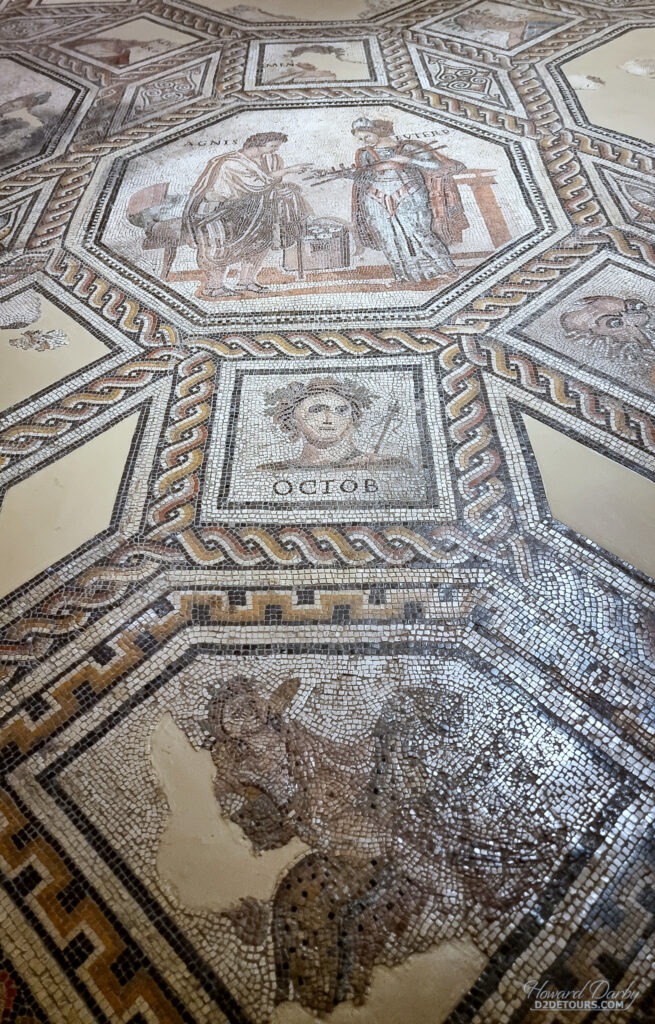
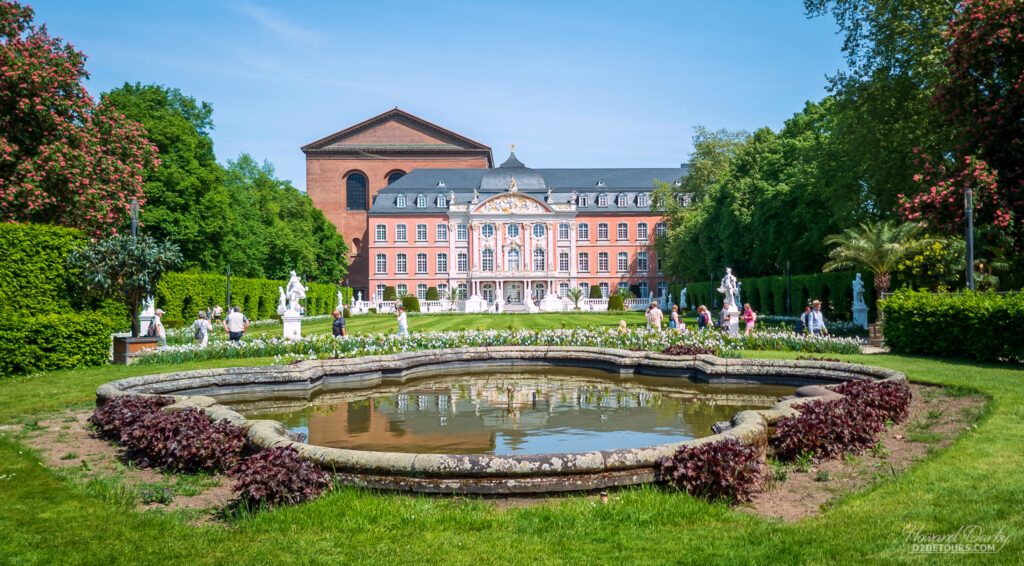
Strasbourg, France is the official seat of the European Parliament, although the bulk of that entity’s activities take place in Brussels, Belgium. For 900 years, Strasbourg was governed by the Catholic church. In 1262 CE, its citizens violently rebelled against the bishopric and it became a free city. In 1681, France annexed it. In 1871, following the Franco-Prussian War, Strasbourg became part of the German Empire. At the end of WWI, it was returned to France, only to be occupied again by Germany in 1940. In 1945, it was returned, once and for all, to France. This French/German heritage is reflected in the language, architecture, and cuisine.
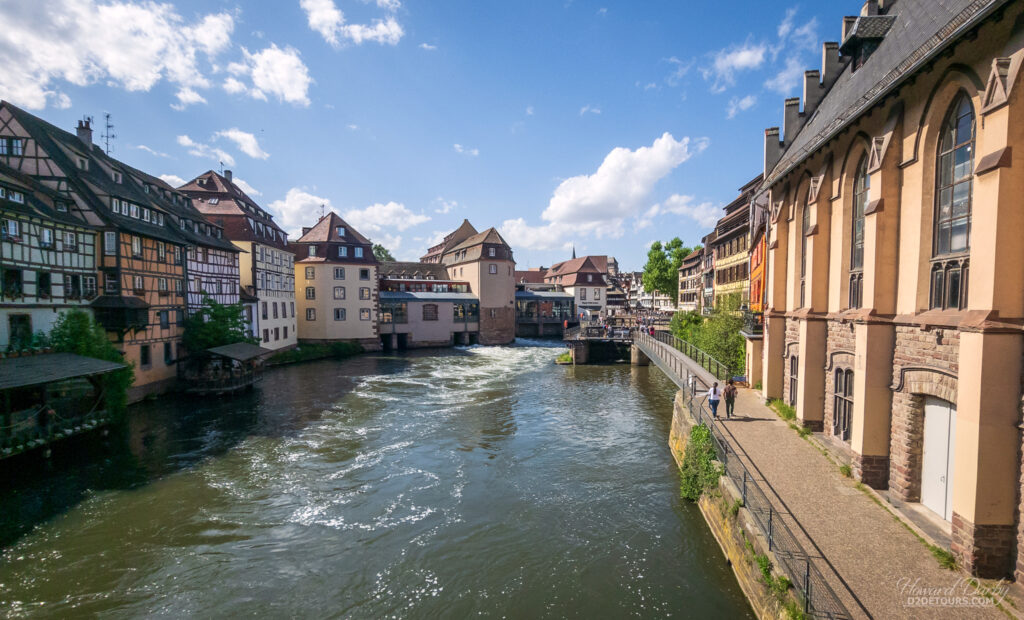

Riquewihr, France appears to have sprung straight from the pages of a storybook. It is one of the very few cities/towns not to have sustained massive damage during WWII (the reconstruction of Europe was a recurring theme on this road trip). For the most part, its architecture has remained unchanged since the Middle Ages, and is the very definition of old-world charm.
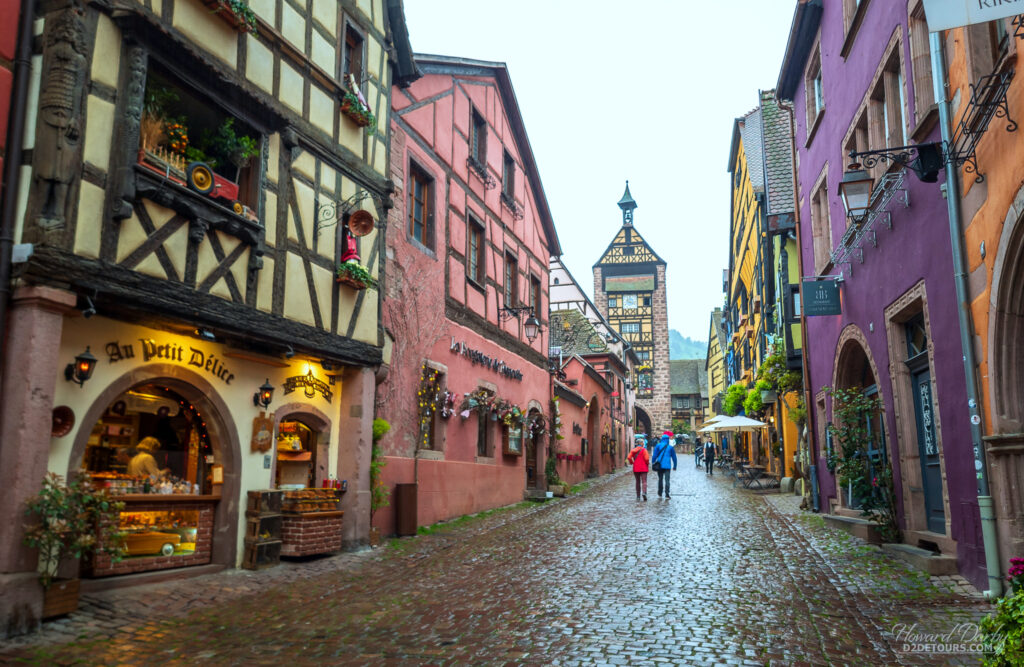
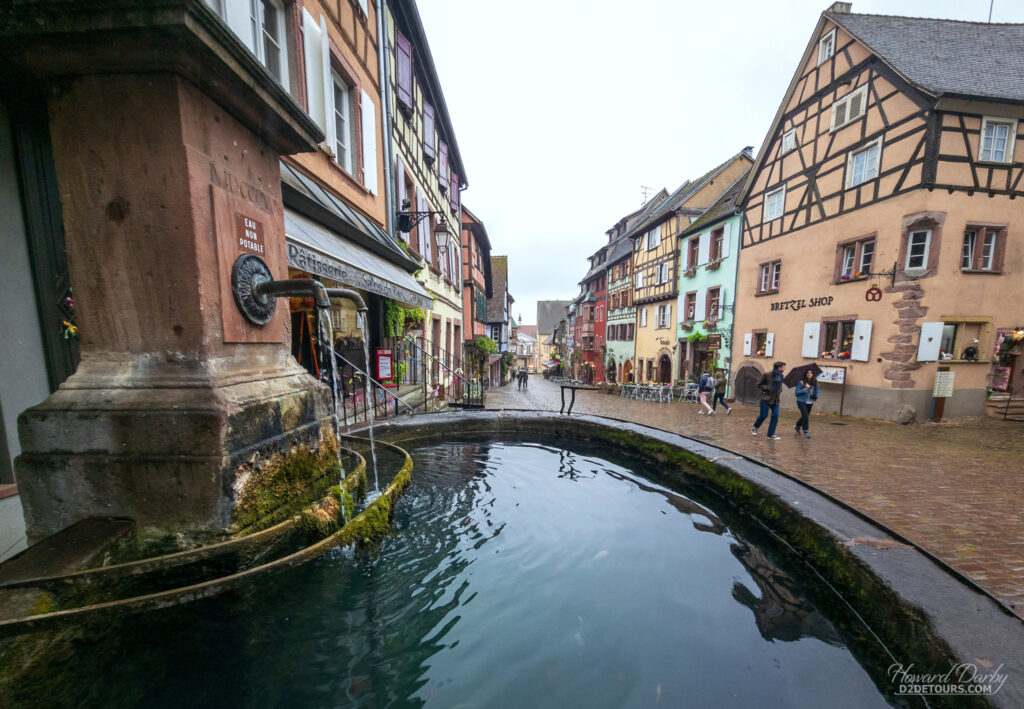
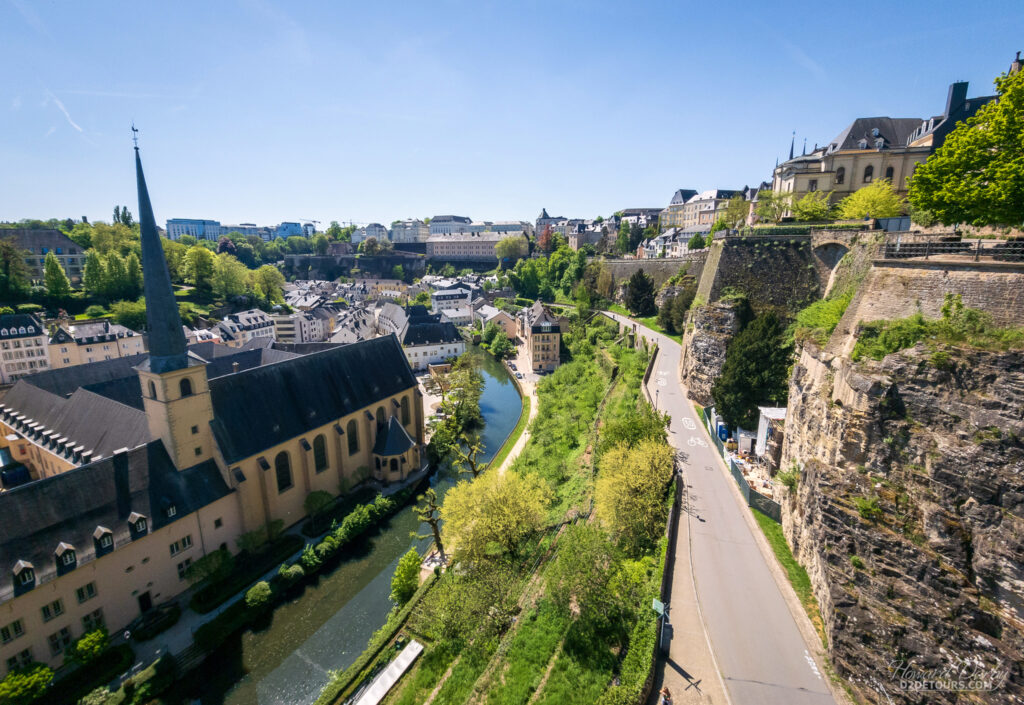
We organized our trip to include a couple of nights in Niederlenz, Switzerland. It’s not likely to be on anyone’s “must-see” list, but staying here allowed Howard the opportunity to spend an afternoon with a couple of Swiss fast draw shooters. Despite not having touched a gun in more than four years, he held his own. Check out Howard’s website if you’re not sure what this is all about.
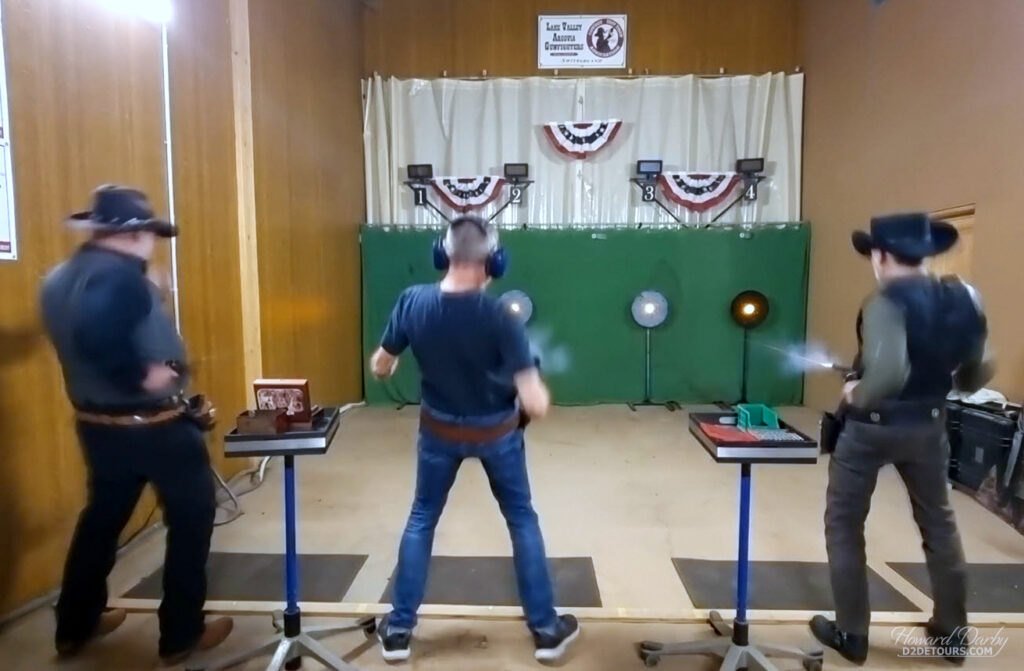
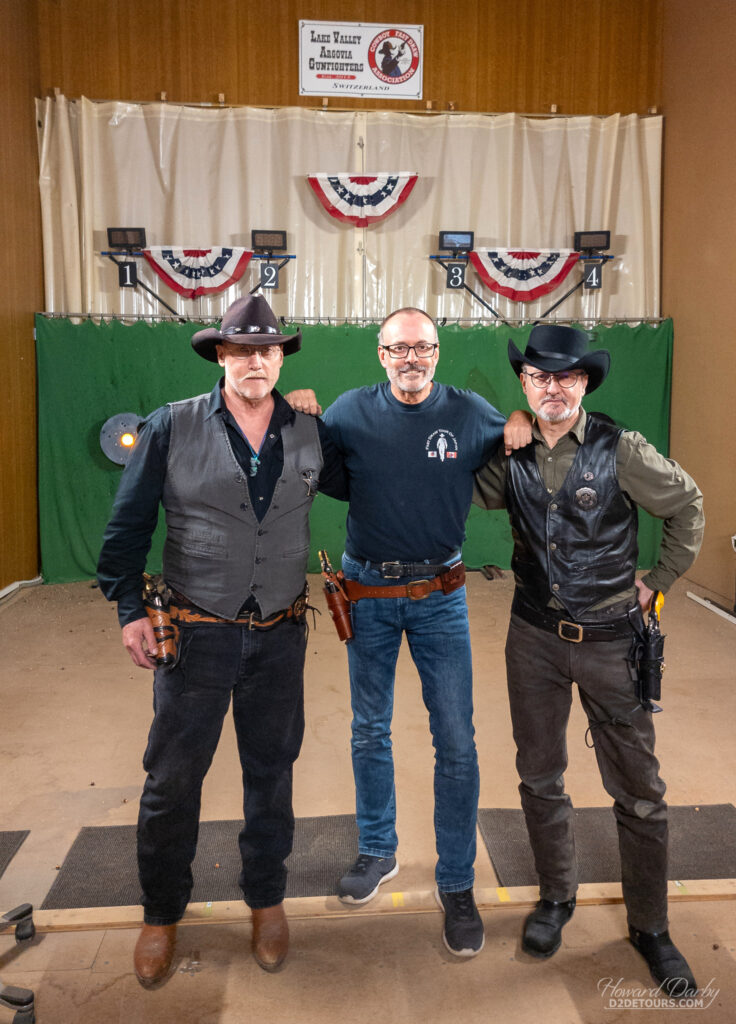
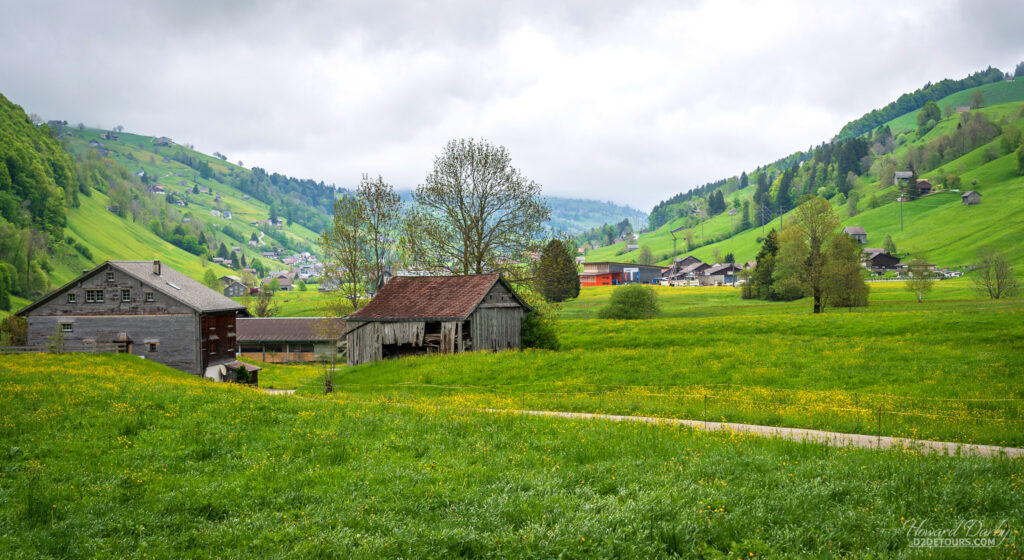
Between 1867 and 1879, thirteen covered wooden bridges were built at various points along the Rhine River. The sole survivor of that era connects the municipality of Vaduz, Liechtenstein with the Swiss municipality of Sevelen. A rebuild of the dilapidated 1871 structure was completed in 1901, and until 1975 was the only way for vehicles to move between the two municipalities. Today, the Alte Rheinbrücke (Old Rhine Bridge) is confined to foot and bicycle traffic.
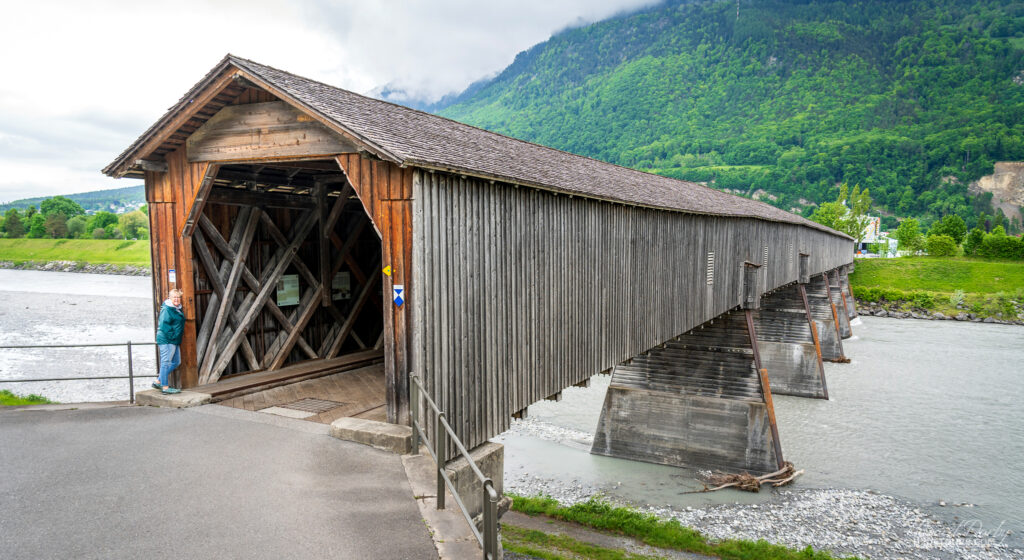
Burgruine Eisenberg is a 14th-century castle perched on one of the hilltops overlooking the municipality of Eisenberg, Germany. It was purposely built by a family of German nobles to showcase their strength after they’d been ousted from their holdings in Austria. Seventy years later, they were once again forced to relinquish their property to the Austrians. To fortify the region in the early 15th century, a second castle, Hohenfreyberg, was built on a hilltop directly opposite Eisenberg. Near the end of the Thirty Years’ War between the Catholic Habsburgs and European Protestants, the Austrians destroyed both fortresses as part of their scorched earth policy (late 1646).
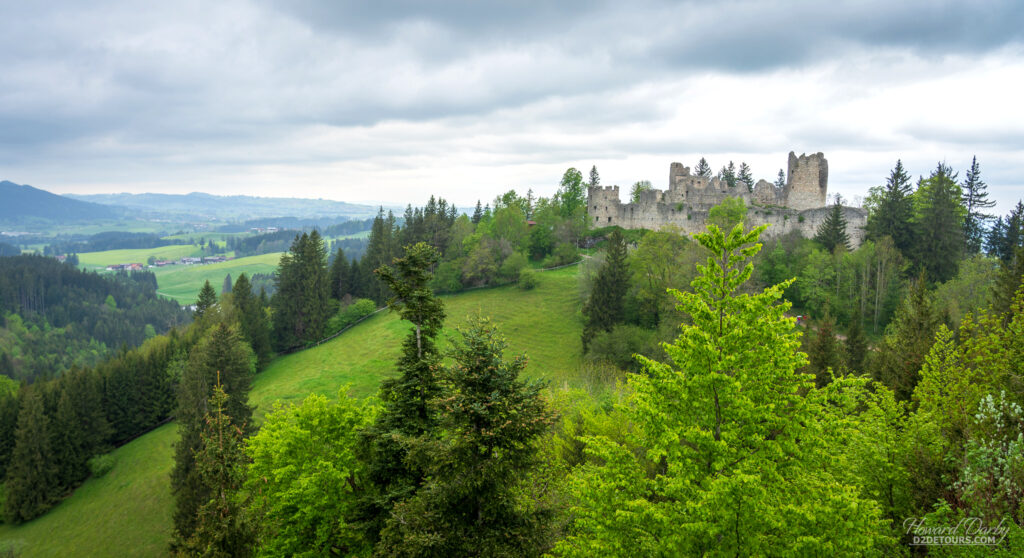
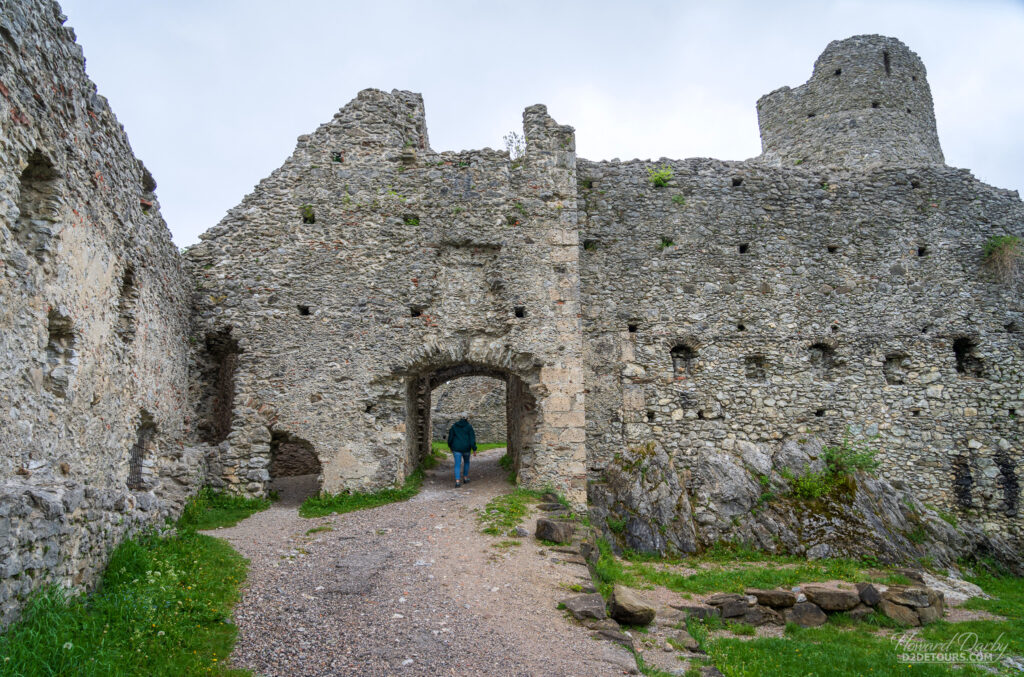
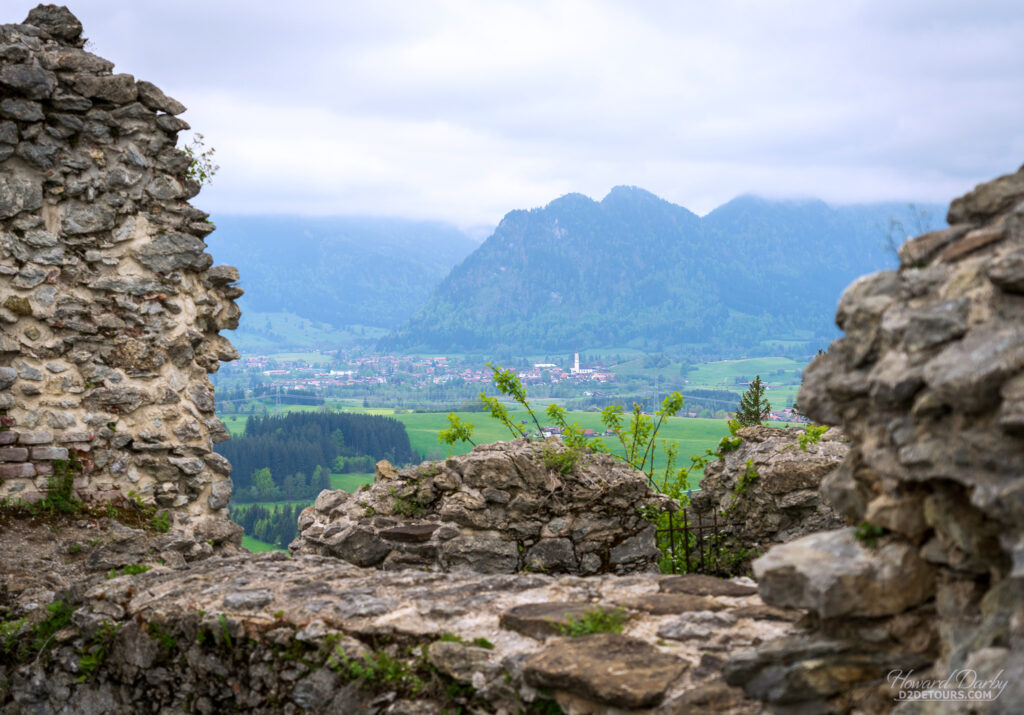
Salzburg, Austria, in the shadow of the Fortress Hohensalzburg, is a compact city perfect for exploring on foot. Its claim to fame is not only as the birthplace of Mozart, but many of the outdoor scenes from the 1964 movie “The Sound of Music” were filmed on the grounds of the 17th-century Mirabell Palace.
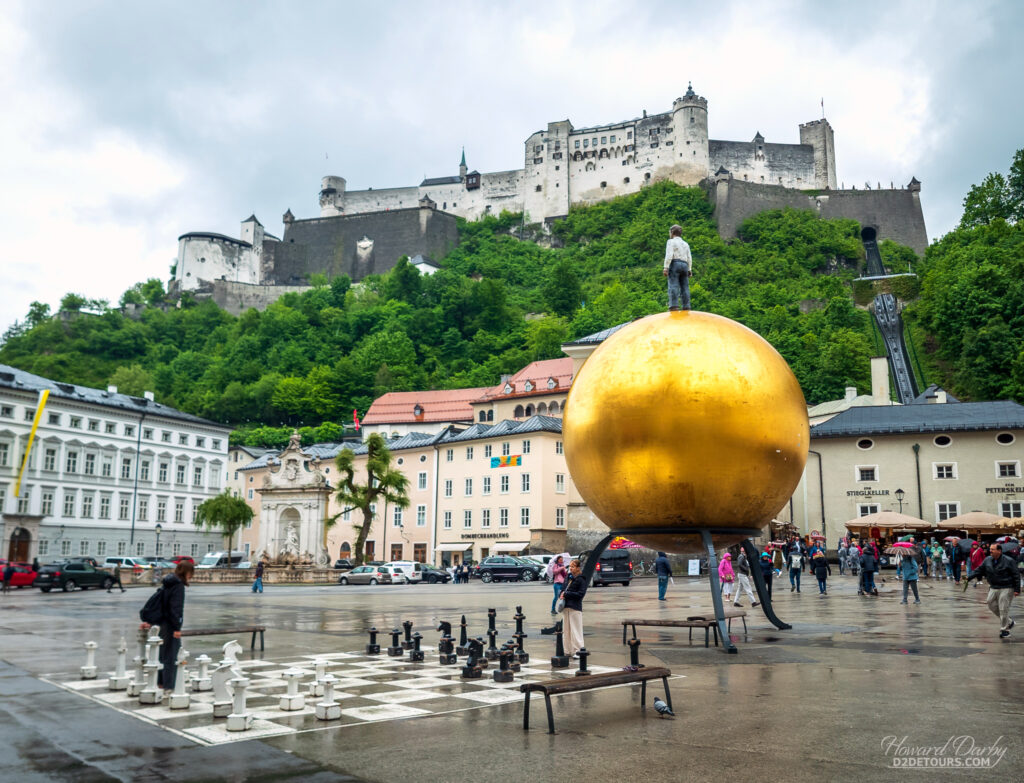
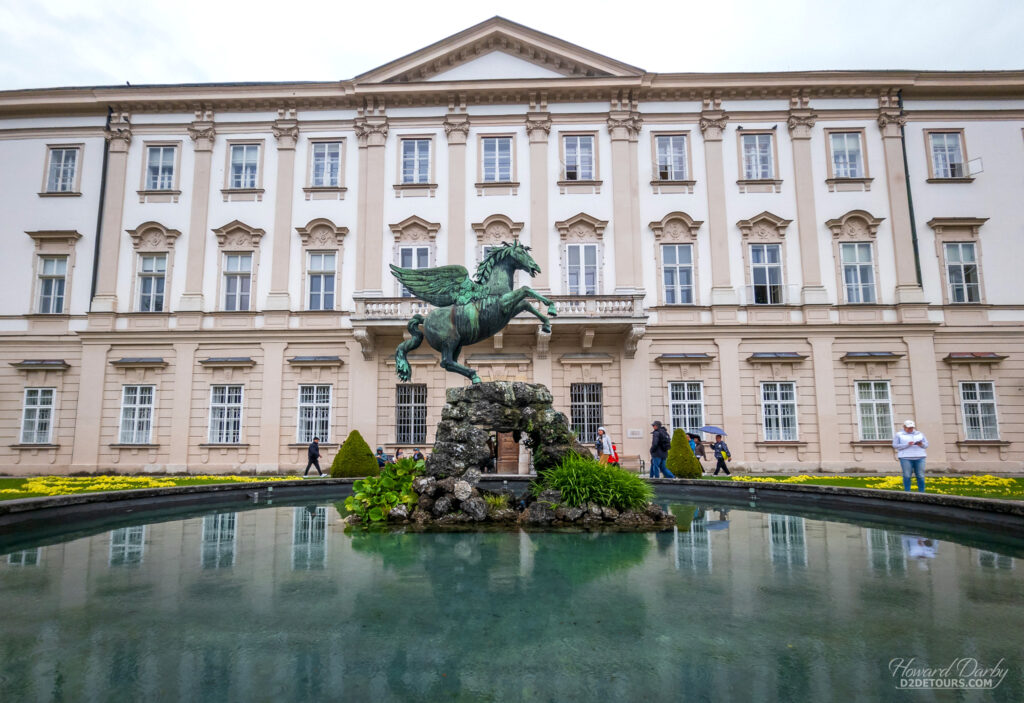
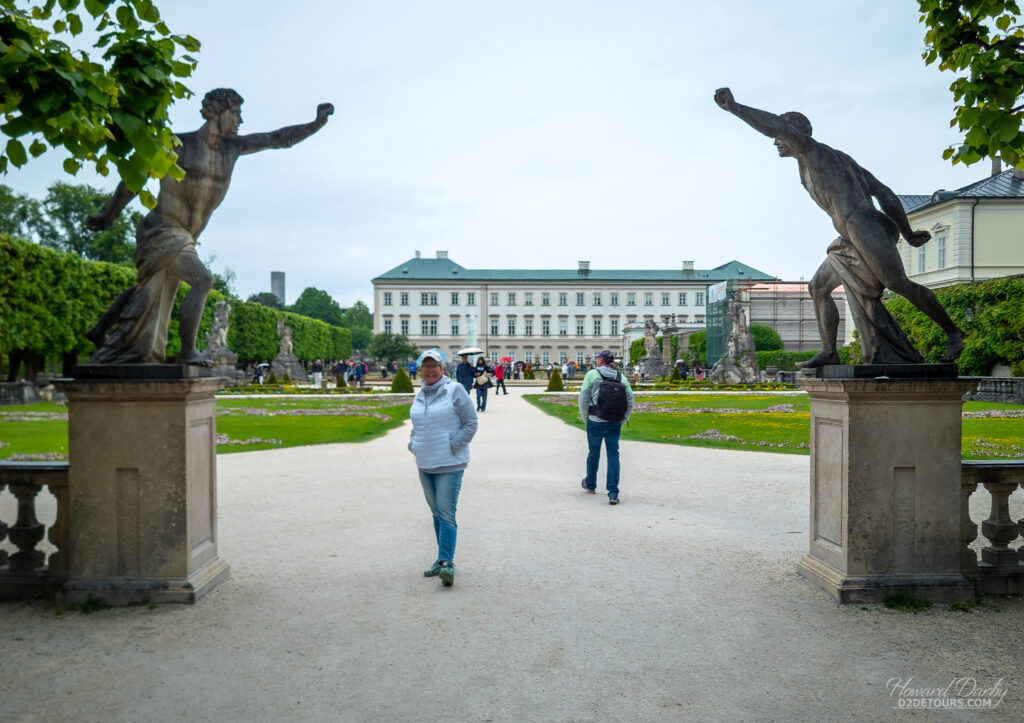
One unusual section of the Mirabell grounds is the Zwergerlgarten (Dwarf Garden). Statues of this type were all the rage in the late 17th century, likely having evolved from the practice of keeping dwarves as court entertainers. The Mirabell Palace menagerie was built in 1695, making it the oldest dwarf garden in Europe. All 28 of these marble statues were auctioned off in 1811; almost all of them have now been returned to their original home.
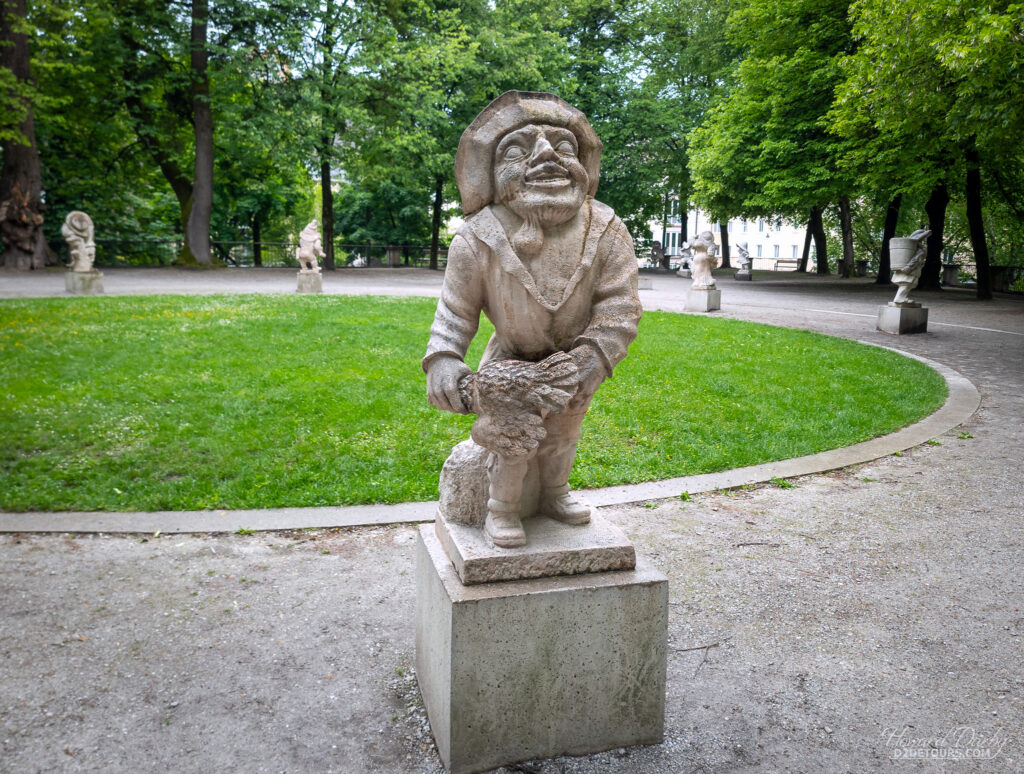
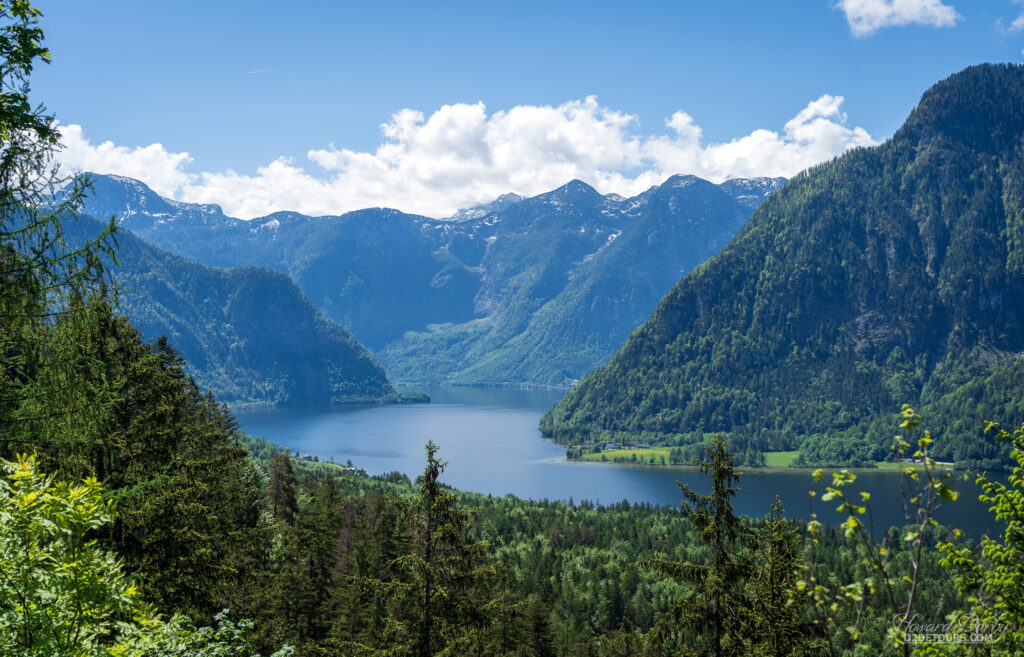
Notwithstanding that Graz is the second largest city in Austria, its population of 306,068 is a fraction of the size of the biggest city in the country, Vienna (pop. 2M). Its small footprint does mean that it doesn’t take long to see all of its highlights.
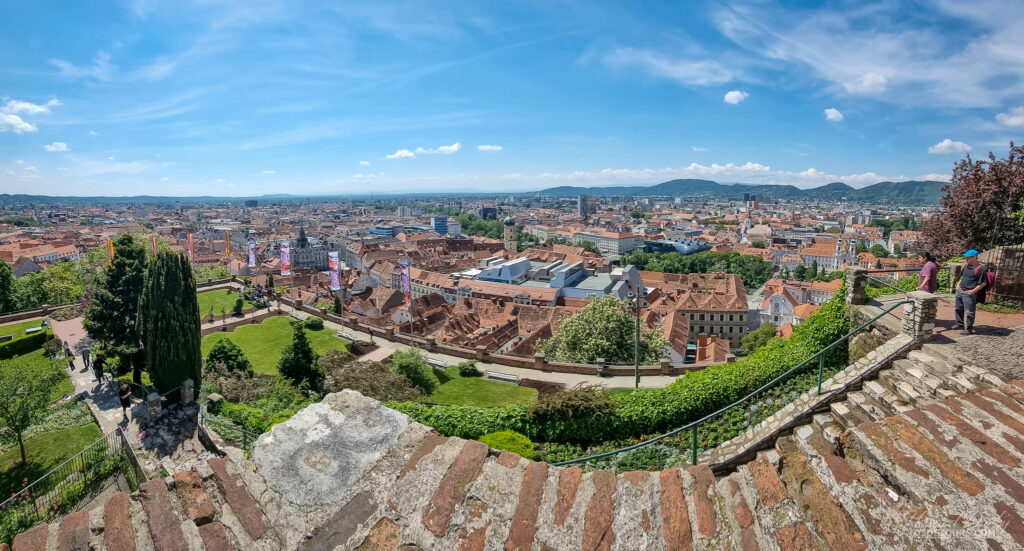
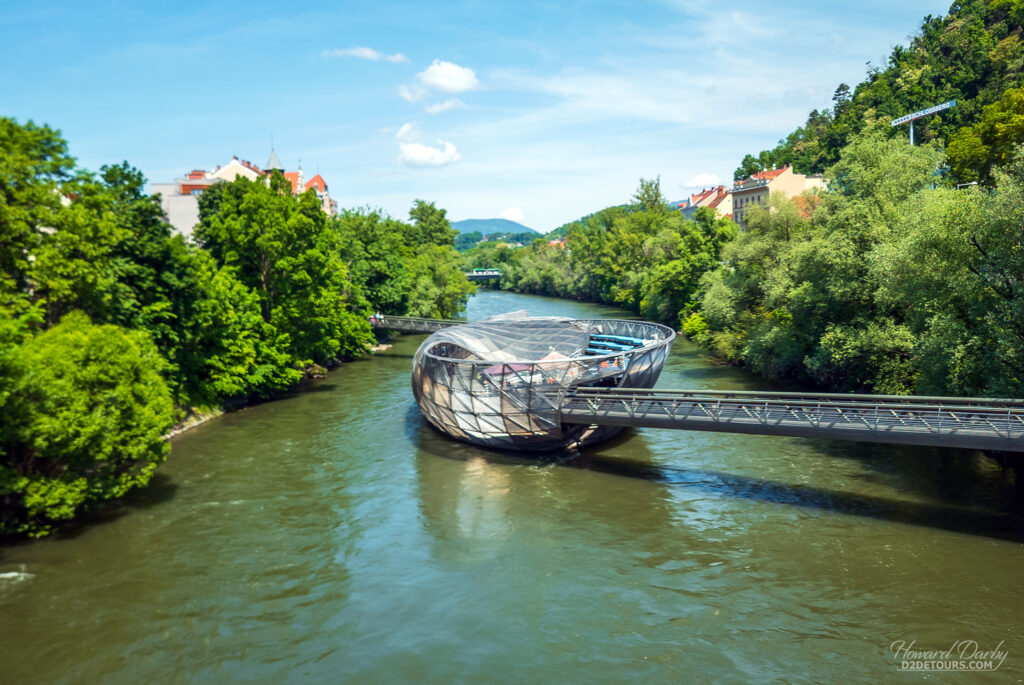
Near the border between Austria and Hungary is the town of Sopron. Its old Roman city walls were strengthened between the 9th and 11th centuries, and successfully repelled the Ottomans in 1529. The city became a safe haven for Hungarians fleeing the regions the Turks did manage to conquer. In 1676, the city was destroyed by fire, and modern Baroque buildings were built on the ruins of medieval structures.
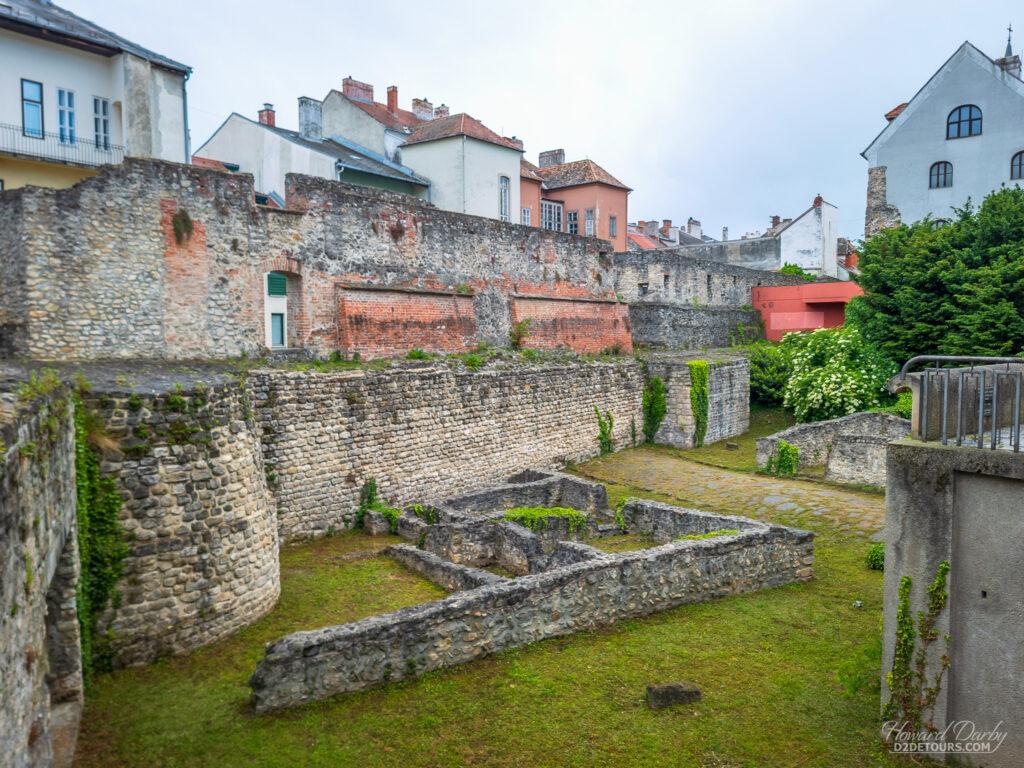
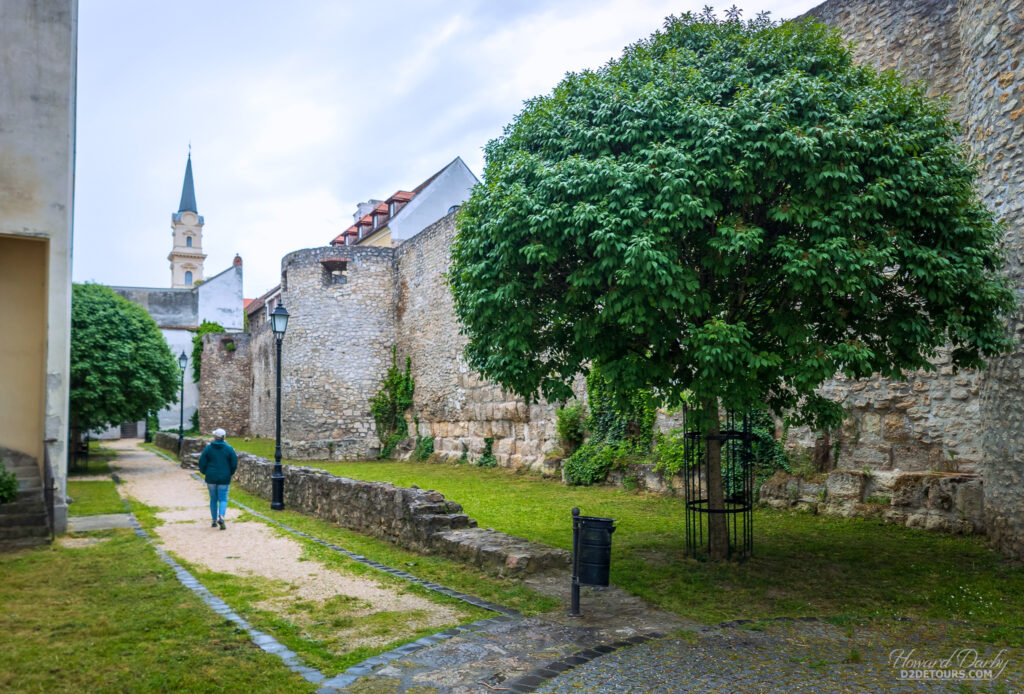
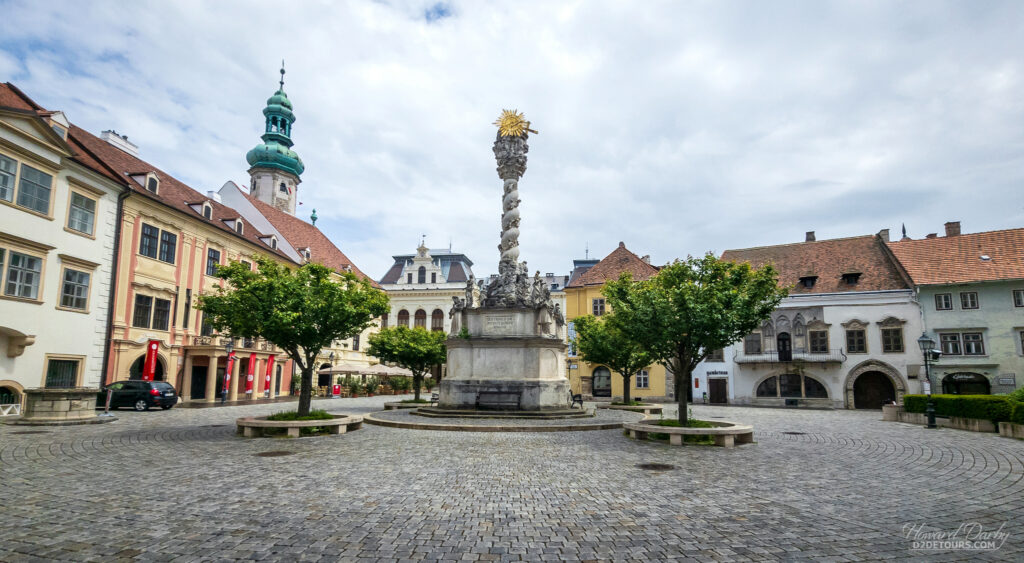
Only 4 km / 2.5 miles from Sopron’s city center, and on the border with Austria, is the Pan-European Picnic Memorial Park. It commemorates an afternoon in 1989 when a peaceful demonstration opened the border between East and West Germany for a brief moment, allowing hundreds of East Germans to escape to the West. It was one of several events that year that led to the tearing down of the Berlin Wall.

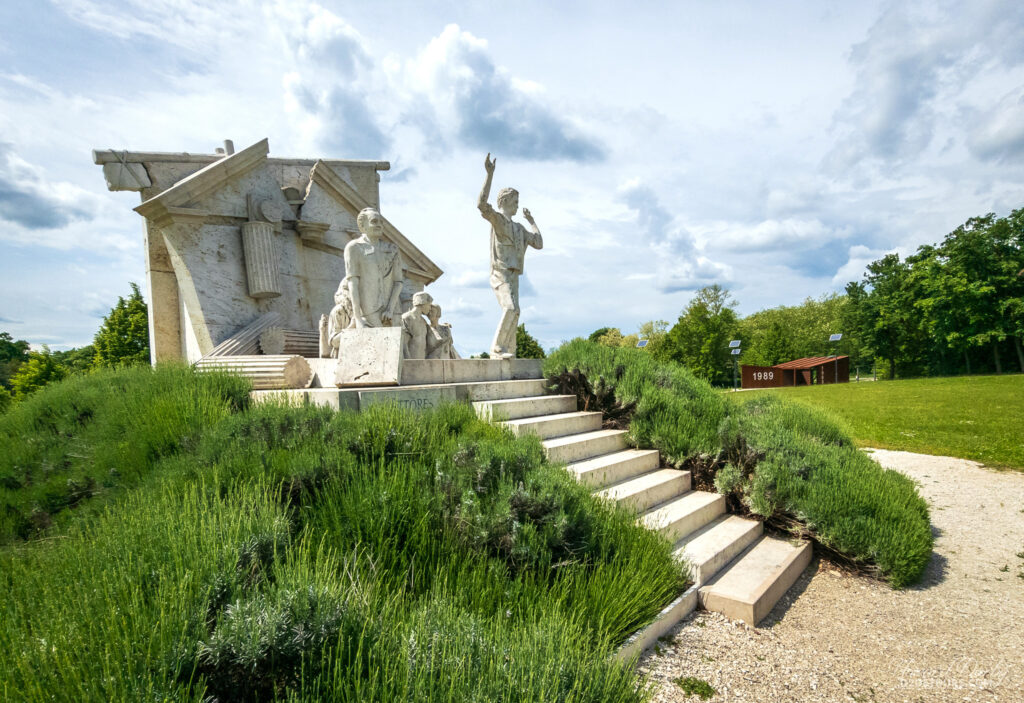
Bratislava, Slovakia, is only 60 km / 37 miles from Vienna, and a popular day trip from that Austrian city. We didn’t manage to make it there last year, so ensured we added it to our itinerary this year. It is a lovely small city, and very walkable with several attractive bits of architecture.
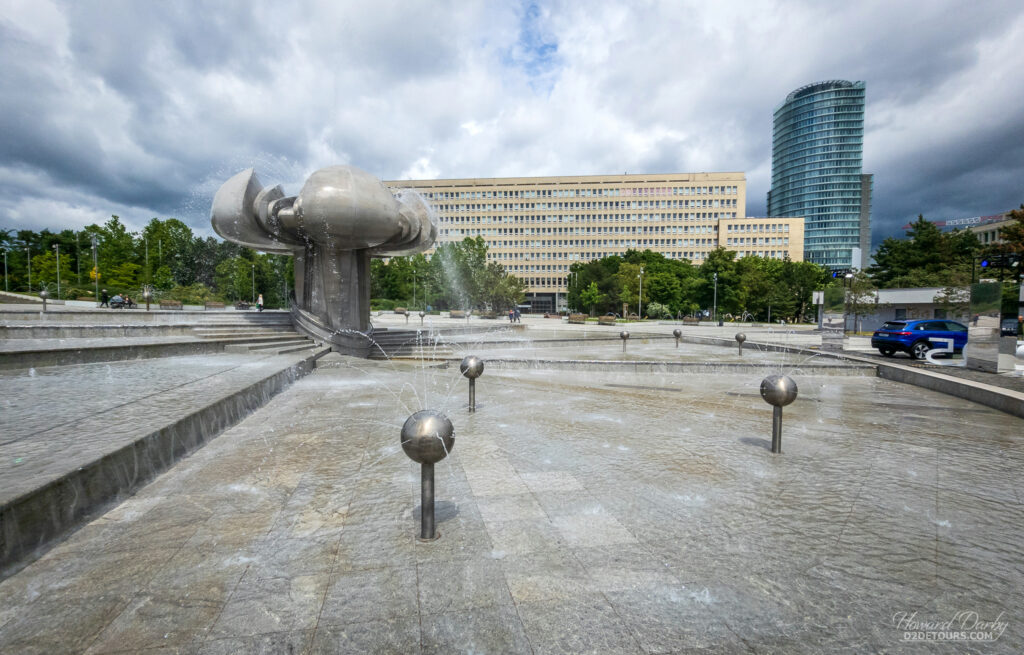
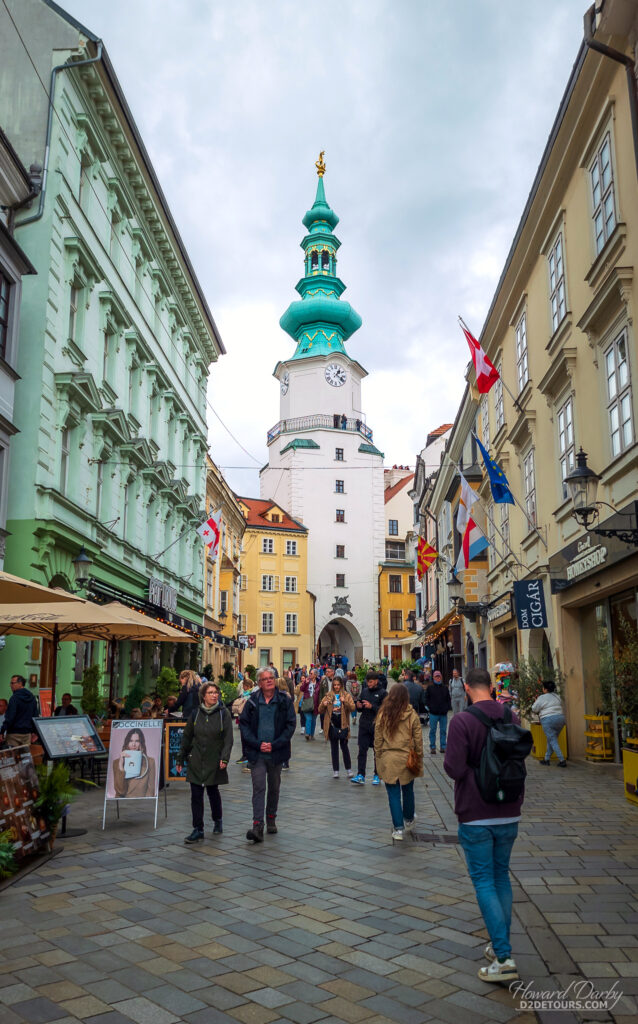
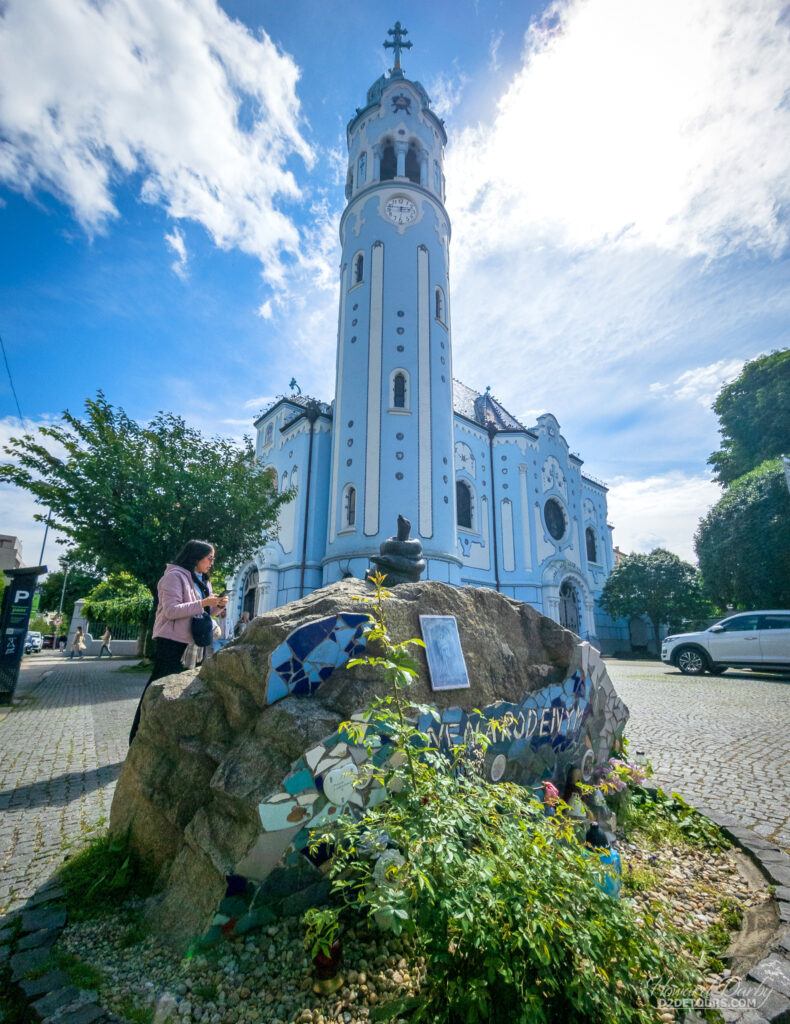
The 16th-century Lednice Castle in Lednice, Czech Republic, sits on lands formerly owned by the Liechtenstein royal family. The Castle and gardens are a UNESCO World Heritage site as “an outstanding example of a cultural landscape designed and created intentionally by a single family during the century of Enlightenment.” Liechtenstein and the Czech Republic have been squabbling over Czech land since 1918, and it was only in 2009 that Liechtenstein formally recognized the Republic as an independent country.
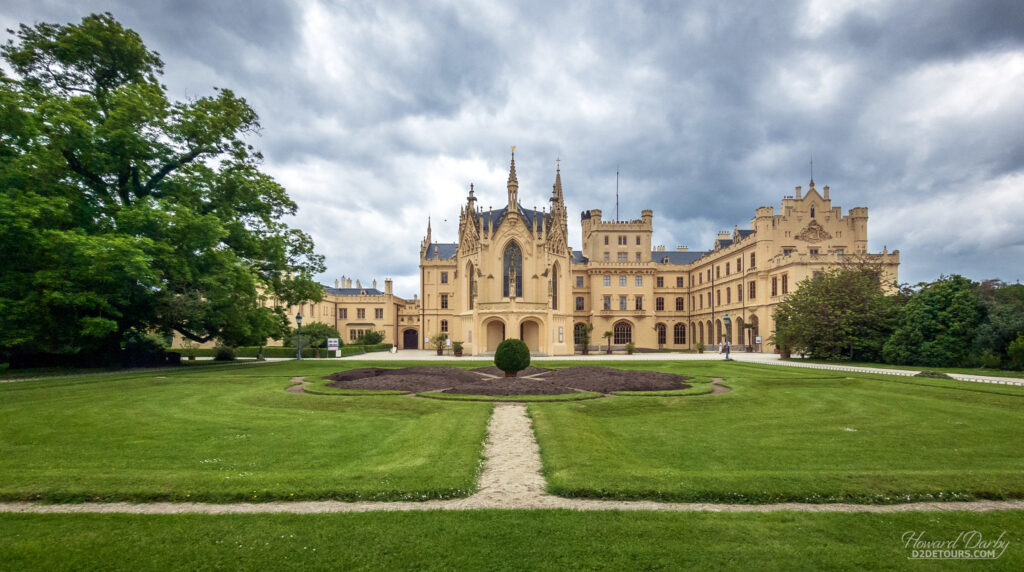
The Czech Republic is comprised of three historic regions, Bohemia, Moravia, and Czech Silesia. Olomouc, founded in the mid-13th century, was the capital of Moravia. Its 15th-century town hall is dominated by a 76 m / 250 ft tower adorned with an astronomical clock. The original clock was destroyed in WWII. The restoration dates from 1947-1955 and reflects the government-approved Socialist Realist style, which features proletarians rather than saints.
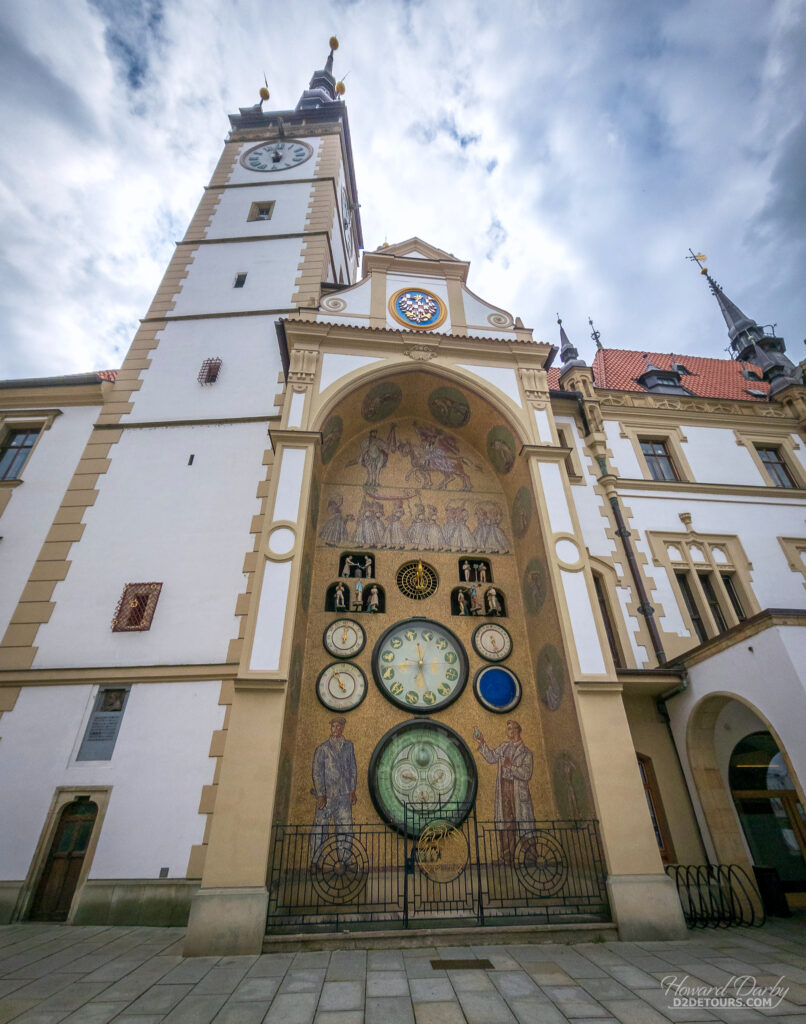
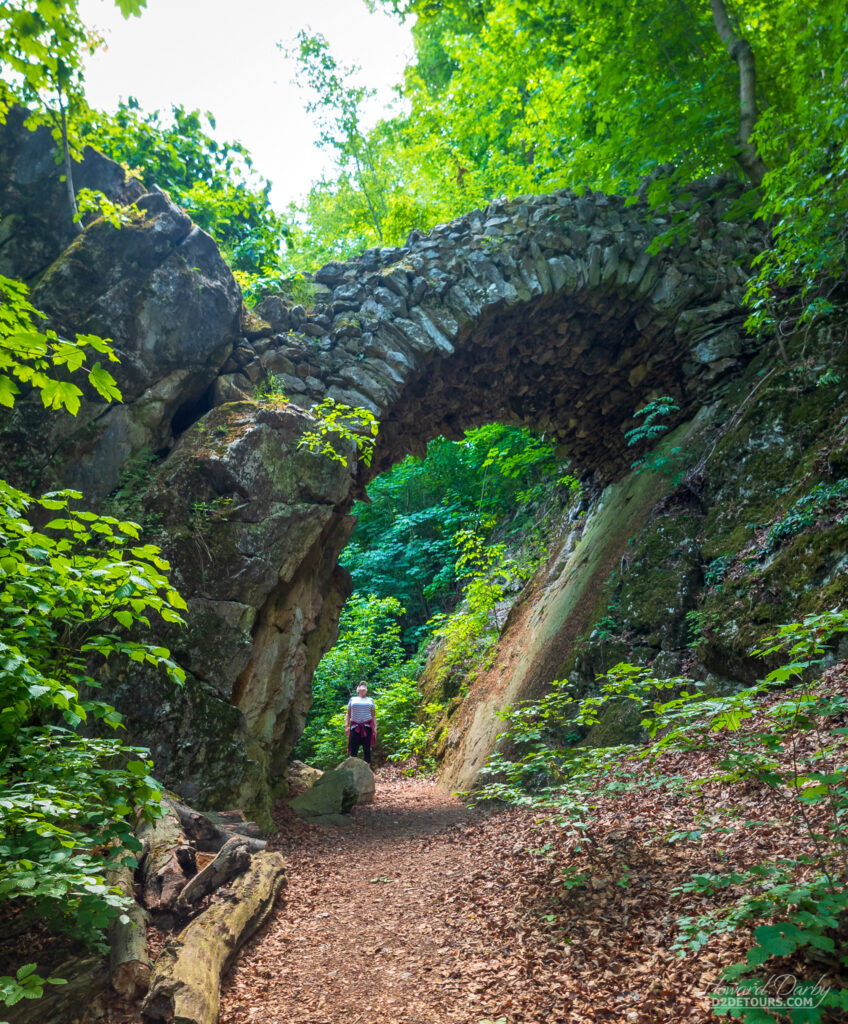
Tarnów, Poland was a quick overnight stop for us. Many of our overnight stays have simply been the best place to stop between point A and point B. Tarnow, on the other hand, offered some compelling architecture in the form of one of the wooden churches for which this part of Poland is renowned. The construction of these rural houses of worship was often funded by noble families, and the choice of timber rather than stone, which was commonly used in urban churches, highlighted the family’s prestige in the community.
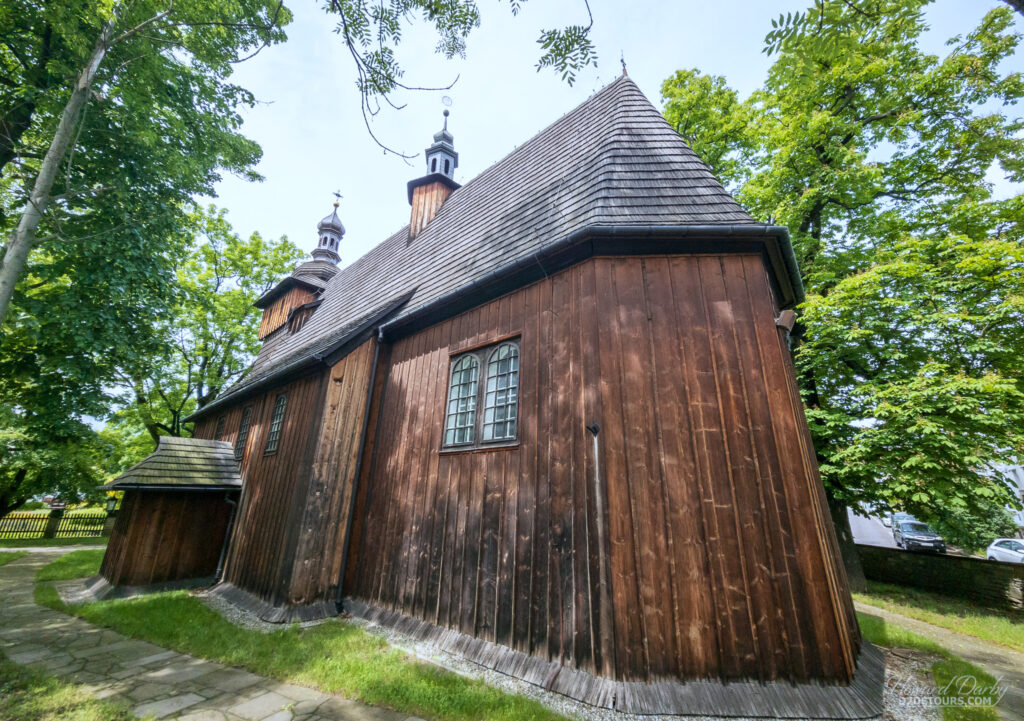
The city of Lublin, Poland took us within 97 km / 60 miles of the Ukrainian border. We’d very much like to see Ukraine someday; however, crossing the border would have, not surprisingly, nullified our insurance contract with Renault. The more I see of Poland, the more I struggle to comprehend the magnitude of loss suffered by the Polish people (the Jewish population in particular) at the hands of the Nazis. Before WWII, 9.5M Jews lived in Europe, nearly 60% of the world’s Jewish population. Approximately 3.5M lived in Poland, approximately 10% of its population. A recent census now puts that number at just over 17,000. Beginning in September 1939, ghettos to imprison the local Jewish population were established in practically every Polish city. The Lublin Ghetto was created in March 1941, and the Majdanek concentration and extermination camp, on the outskirts of the city, was established in October of that same year. The city was liberated by the Red Army in 1944, and until 1989 Poland was one of several countries that were technically independent, albeit allied with the USSR. Lublin today is a vibrant city, full of life, though it has not forgotten its past.
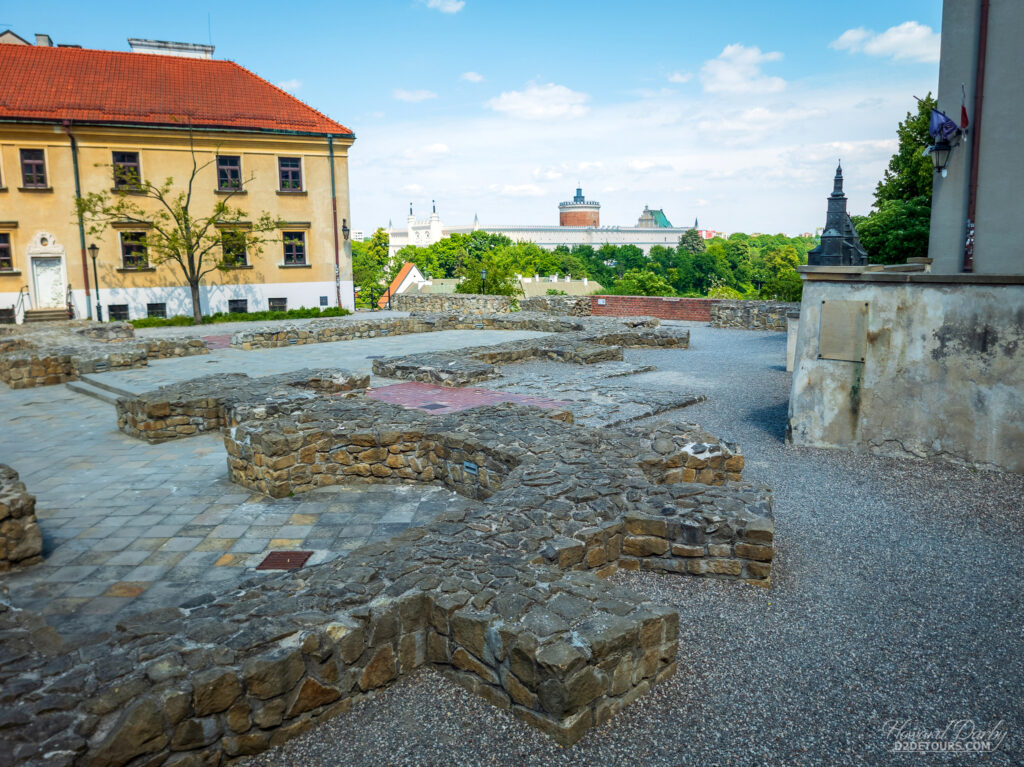
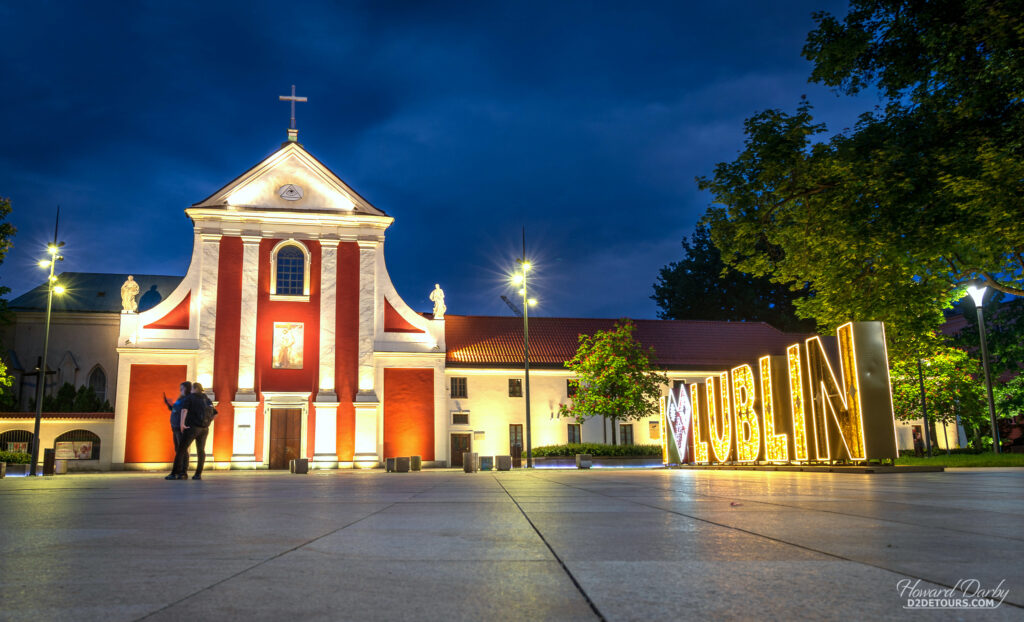
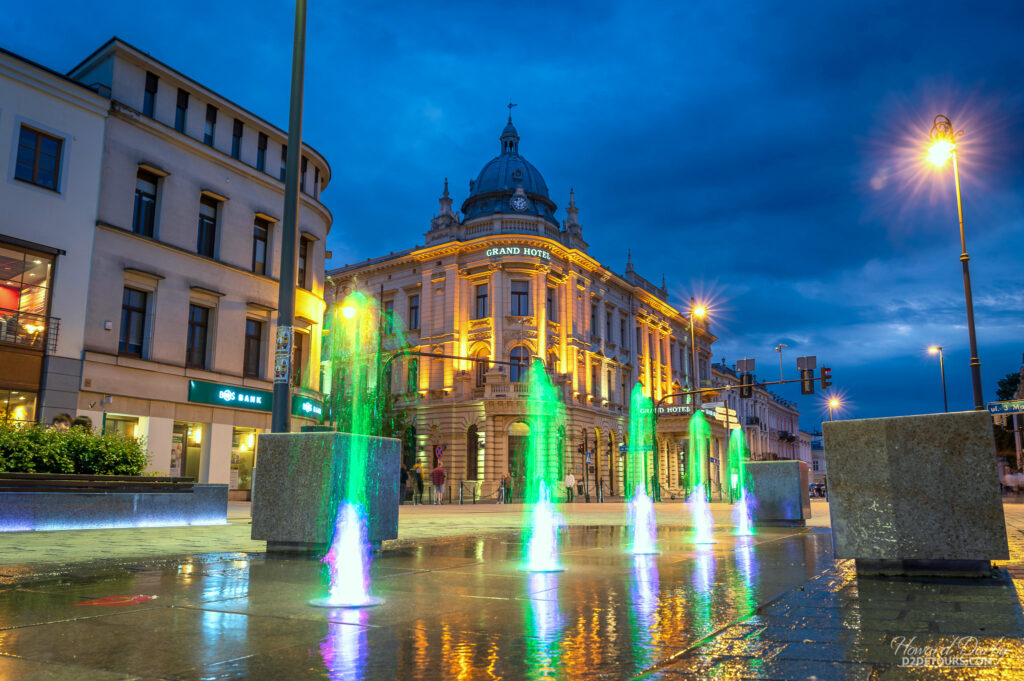
In late 1940, work began on military headquarters for Hitler secreted away in the Masurian woods in northeastern Poland. A single railway line and a small airstrip were the only means by which to access the complex. Hitler arrived at the Wolfsschanze (Wolf’s Lair) in June 1941, and would spend the vast majority of the war (nearly 800 days) directing activity while safely ensconced in these concrete bunkers.
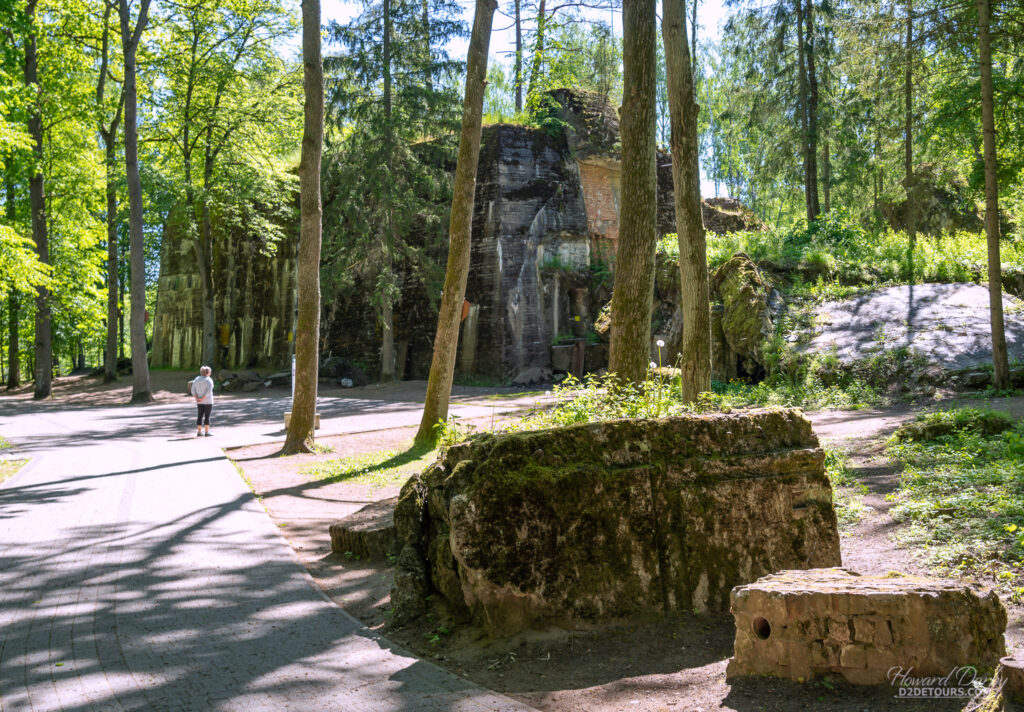
At the peak of the war over 2,000 people lived and worked at the Wolf’s Lair. As early as 1938, members of the German military were plotting to overthrow Hitler. Indecisive leadership and the pace at which the war progressed thwarted the conspirators. On July 20, 1944, Operation Valkyrie almost succeeded. Claus von Stauffenberg, a highly regarded and decorated soldier, attempted to assassinate the Führer during a conference held at the Wolf’s Lair. Unfortunately, someone moved the bomb-carrying briefcase left behind by von Stauffenberg before detonation, and while four people did die from injuries suffered in the blast, Hitler emerged with little more than singed trousers, a perforated eardrum, and pinkeye! The co-conspirators, together with their friends and families, were rounded up and dispatched. Hitler was dead within a year. He abandoned the Wolf’s Lair in November 1944 and committed suicide in Berlin on April 30, 1945.

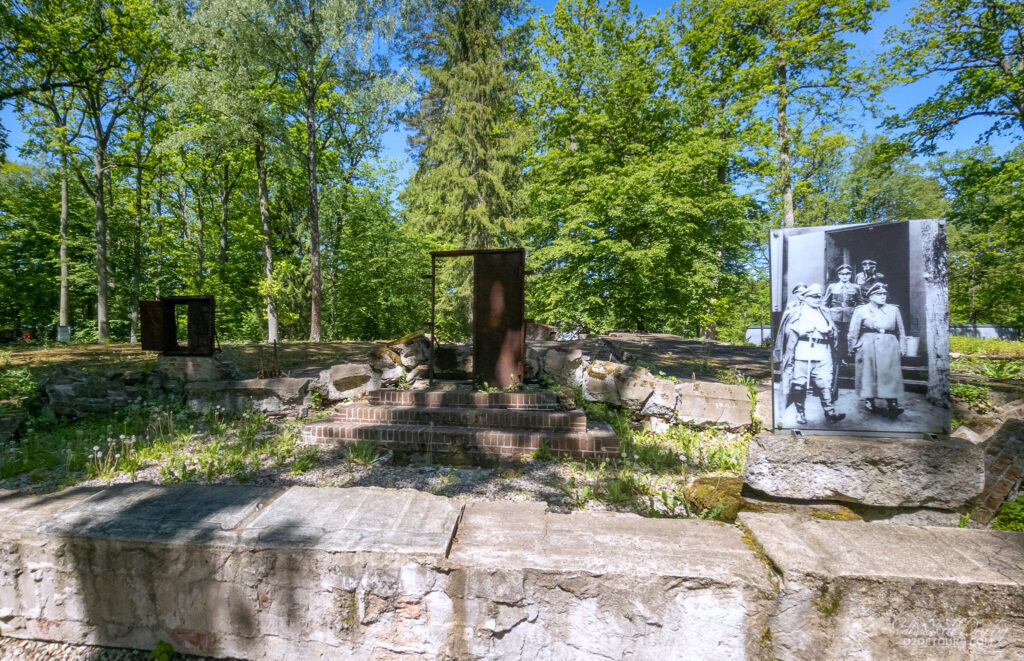
Frequent readers of our blog may have deduced that we love exploring abandoned places, and the unfinished canal locks near the small Polish village of Mamerki beckoned us forth. The Masurian Canal was a joint Polish/Russian project, interrupted by WWII, that was intended to connect the Mazurian Lakes to the Baltic Sea. There is no definitive proof, yet it has long been suspected, that the Nazis intended to transport Uboats through these locks – it can’t be a coincidence that the locks are only 21 km / 13 miles from the Wolf’s Lair.

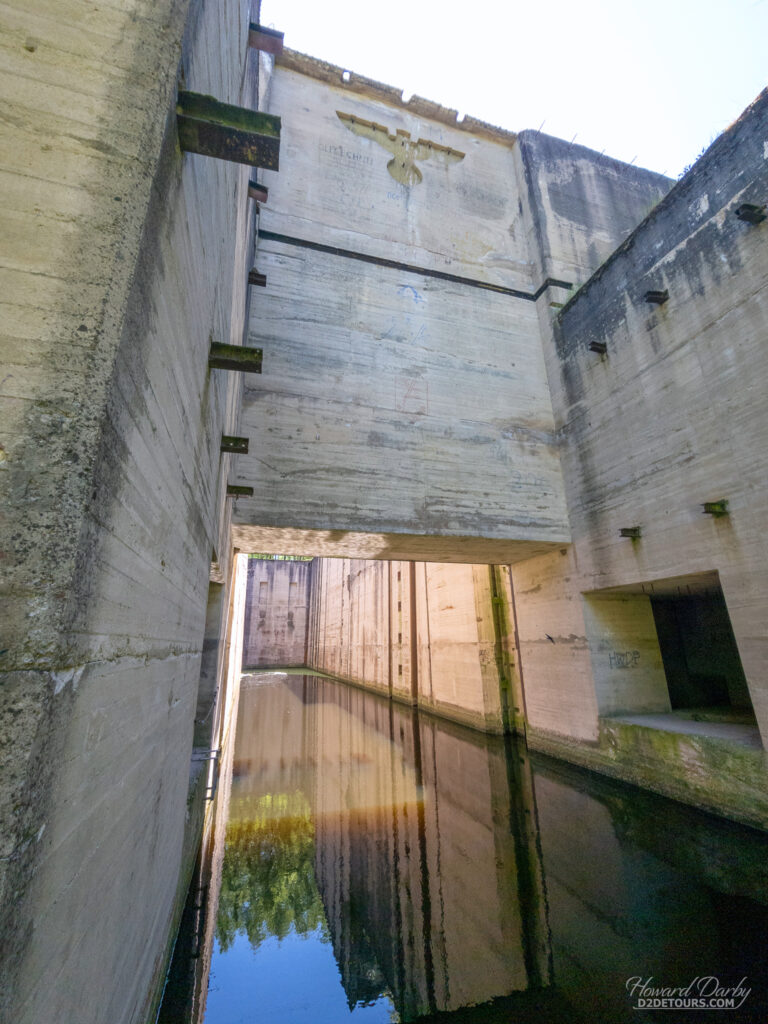
We fell in love with Gdańsk (also known as Danzig in German) on the shores of the Baltic Sea – it may rival Kraków as our favourite Polish city. History, history, history! It is one of the oldest cities in Poland, founded in the 10th century. Given its position on the Baltic Sea, it was a major player in the Hanseatic League, a medieval commercial and defensive alliance of merchant guilds and market towns. On September 1, 1939, Germany invaded Poland by launching an attack on the city’s military depot located on the Westerplatte peninsula. The Solidarity movement, a key contributor to the end of communism in Eastern Europe, with Lech Wałęsa at the helm, was centered in Gdańsk.
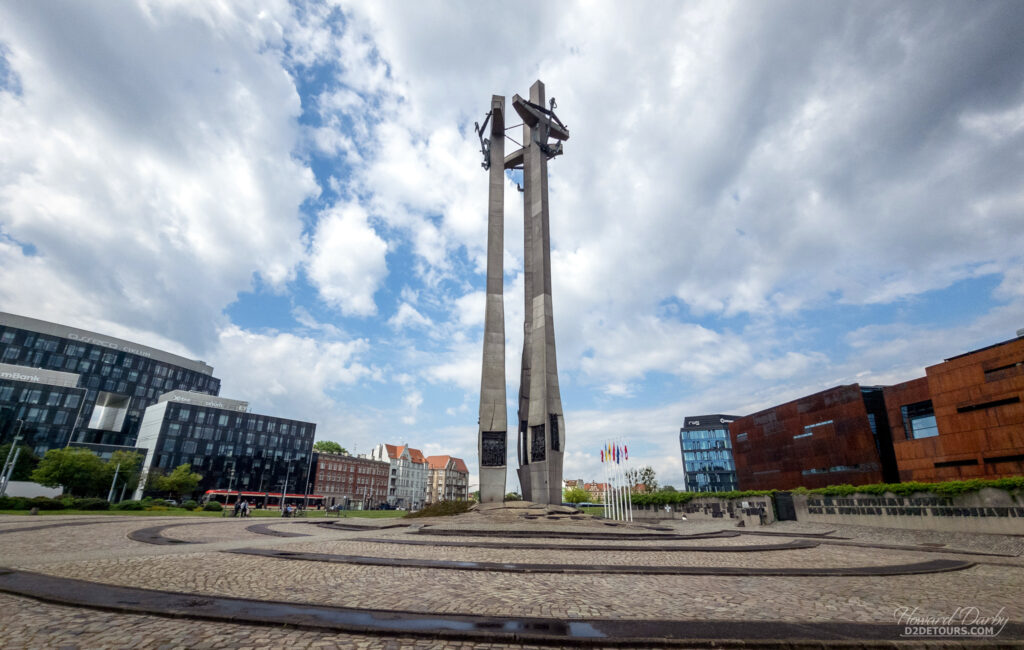
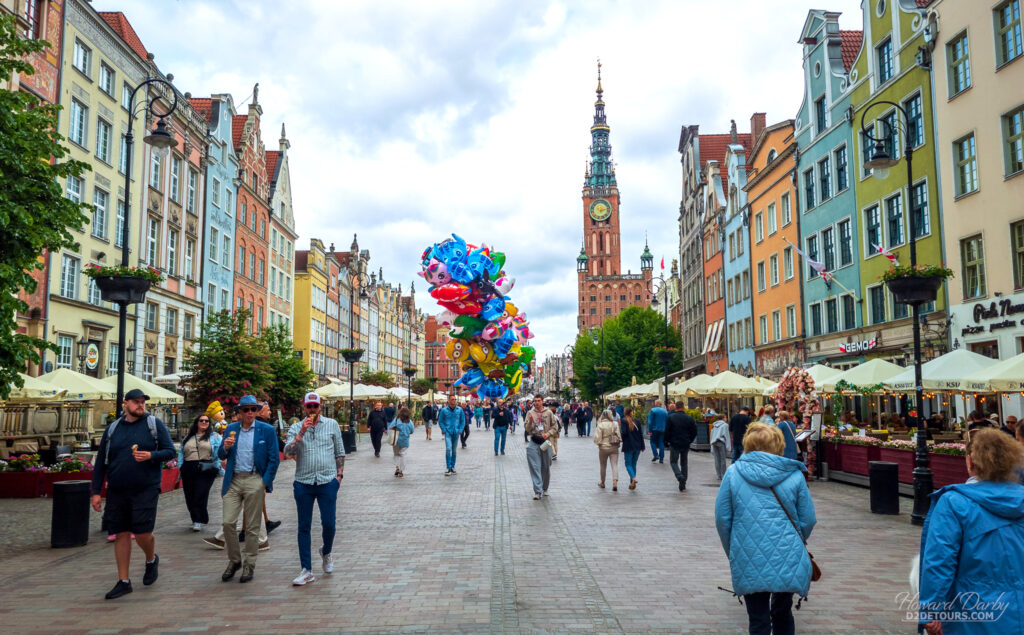
Interestingly, before WWII, 98% of the population of Gdańsk identified as German. After 1945, most of the Germans were expelled, which presented a conundrum when the local administration began discussing how to begin reconstruction of the city, 90% of which had been destroyed during the War. Anti-German sentiment and the desire for a fresh, modern approach to the architecture conflicted with the desire to restore the city to an idealized version from the late 18th century. In the end, no one was entirely appeased.
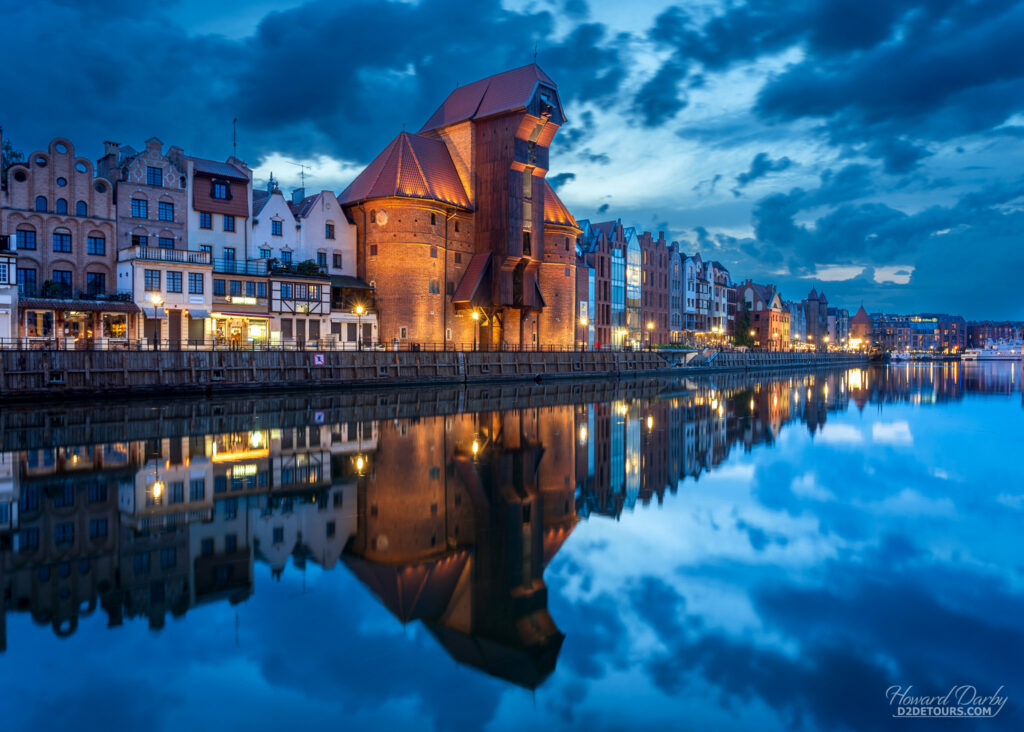
Between 1952 and the late 1960s, restoration efforts reflected a 16th- and 17th-century appearance, intentionally omitting any German influences from that period, instead leaning into Flemish-Dutch, Italian, and French aesthetics. As outsiders, we thought the city streets were spectacular.
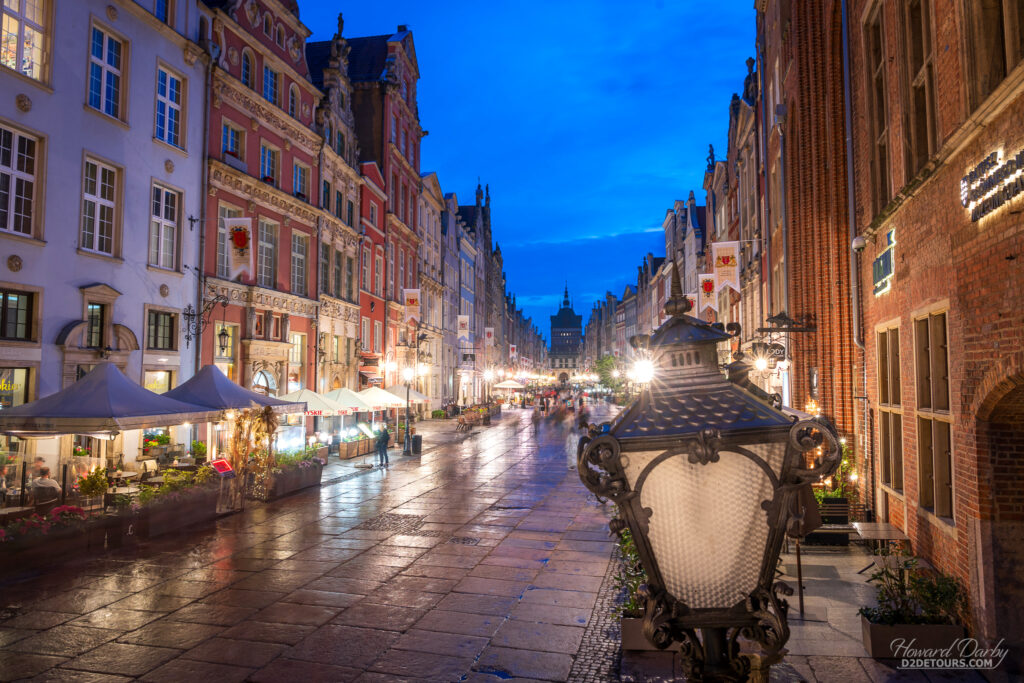
Roughly an hour’s drive south of Gdańsk is the Castle of the Teutonic Order in Malbork. This Germanic group of Catholic crusaders began construction of their fortress in 1274, with the final brick laid nearly 132 years later. It is a magnificent example of a medieval fortress and, upon completion, was (and still is) the largest brick castle in the world. We spent two hours exploring it.
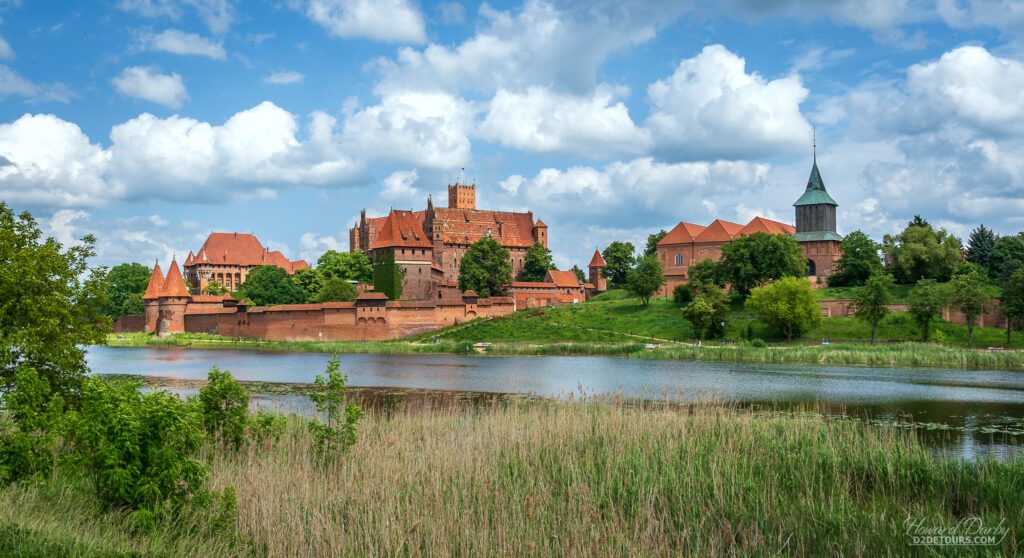
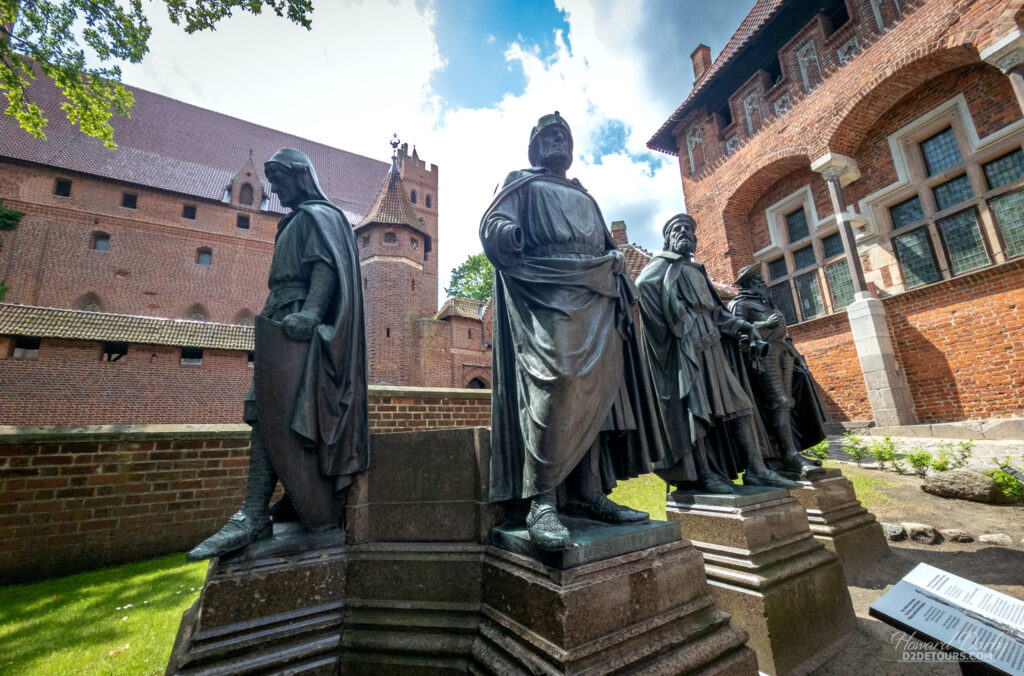
My favourite detail was the sign for the privy. No boring WC or stick people, a devil with his legs crossed marks the entrance to the long, narrow hallway that ended with relief. I must say, as charming as the devil detail was, the idea of using cabbage leaves in lieu of toilet paper seemed less delightful, and I can’t begin to imagine the smell wafting from the castle moat where all the waste from the privies above would collect.
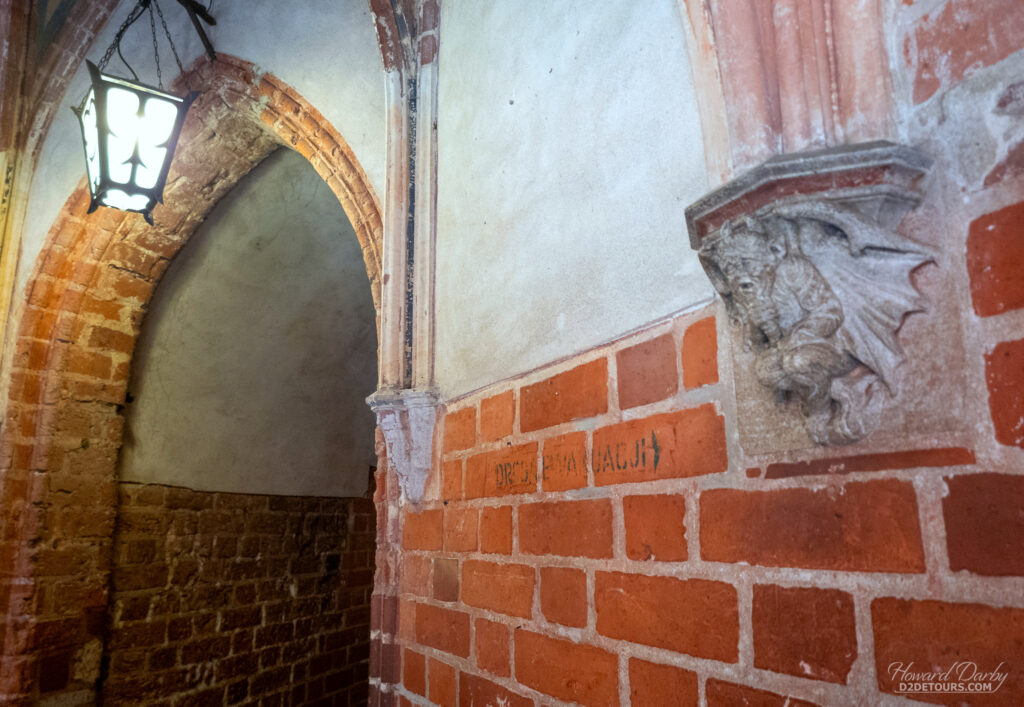

Our last stop in Poland before we hopped on a ferry to visit the Scandinavian countries of Europe, was Szczecin (pronounced Shchzin), the largest seaport in Poland. The Vikings and Lechites (Slavic tribes who inhabited modern-day Poland and eastern Germany) both established strongholds in this region in the 8th century, yet city rights were not granted until 1243 CE. As a prosperous port on the Baltic Sea, Szczecin joined the Hanseatic League in 1283. Unfortunately, by the late 15th century, the League leadership was dominated by Germans who began strictly enforcing anti-Slavic policies, including barring membership in craft guilds, doubling customs taxes, and prohibiting the public use of their native language. Many wealthy Slavic merchants were stripped of their possessions, and forced to hand them over to German citizens. German mistreatment of the Slavic population intensified during WWII. Not surprisingly, beginning in early 1946 and continued through 1947, a systematic expulsion of Germans took place throughout the city. Szczecin stood in solidarity with Gdańsk during the December 1970 protests, and again in 1980.
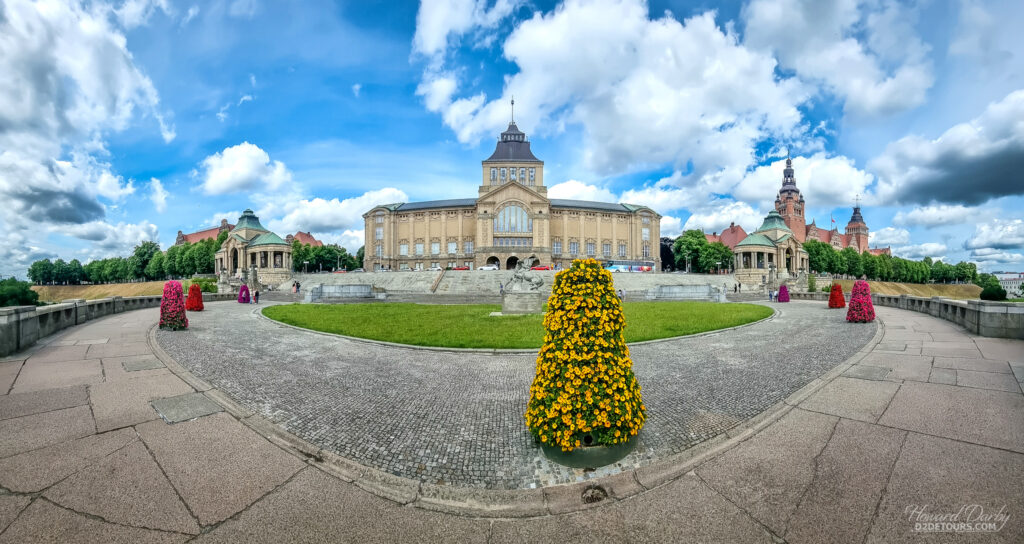
The tourist bureau has put together a terrific walking tour called the Red Route, a 7 km / 4.3 mile loop which takes you passed many of the city’s historical sites. Grab a map from one of the tourist information centers and follow the red lines painted on the sidewalk as they lead you to specific stops complete with information boards explaining the significance of the location (information is in Polish, German, and English). Hannover, Germany has done something similar, but you have to purchase a guidebook to go along with that route whereas the Szczecin route was 100% free.
Off to Sweden!
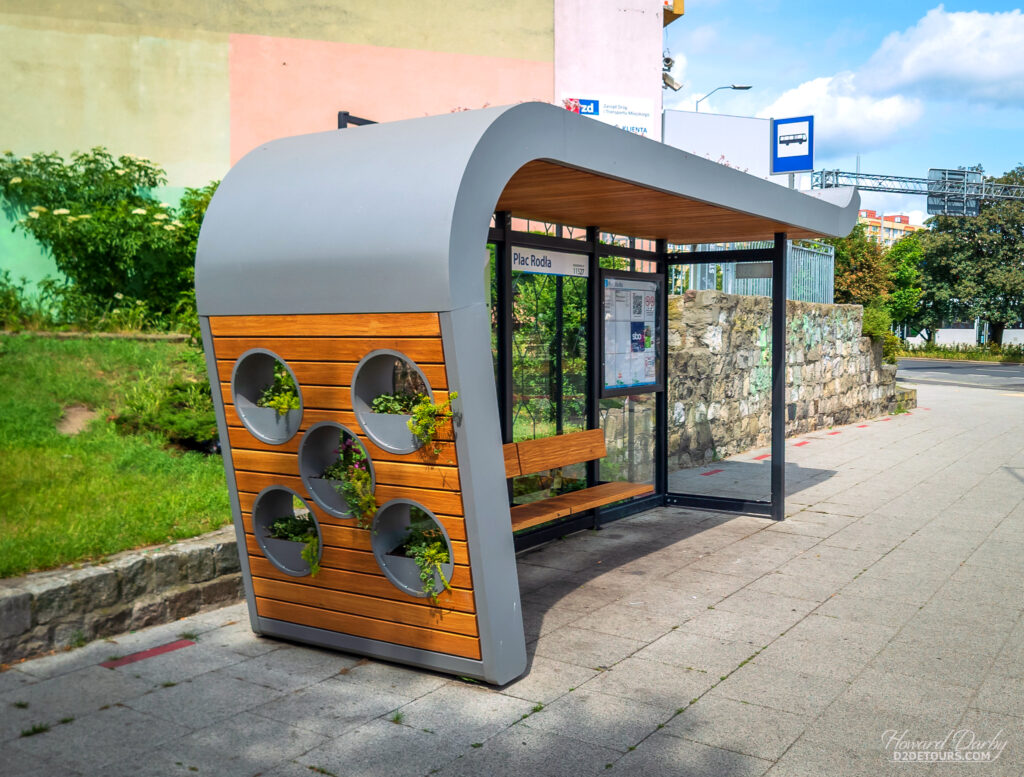
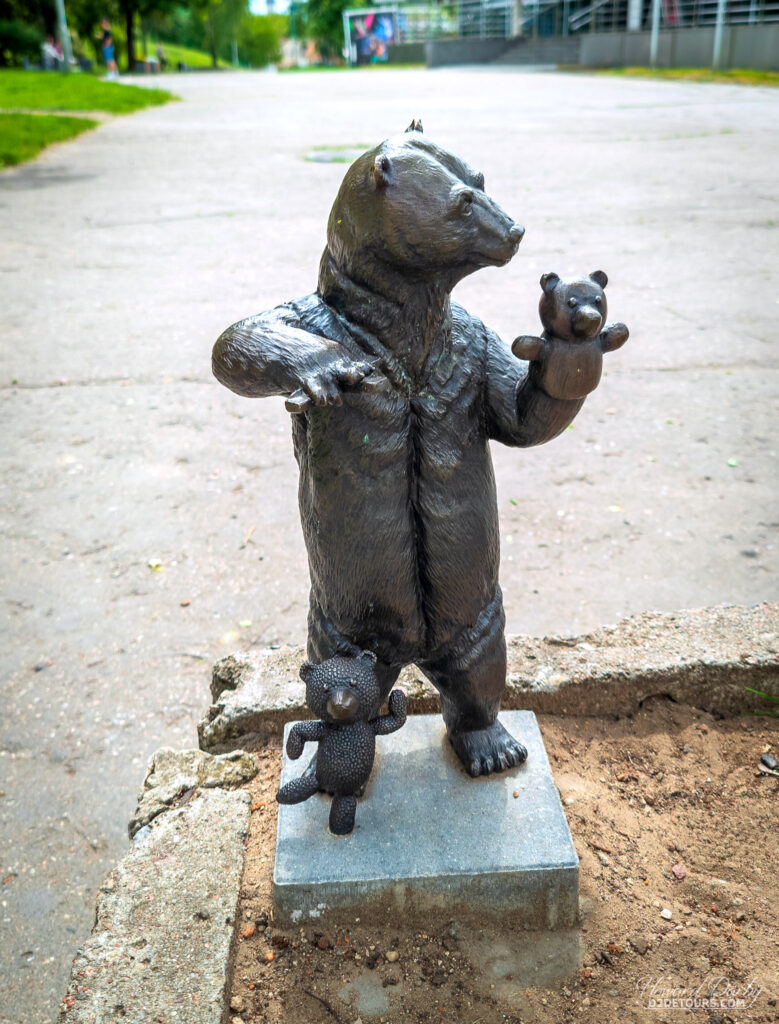

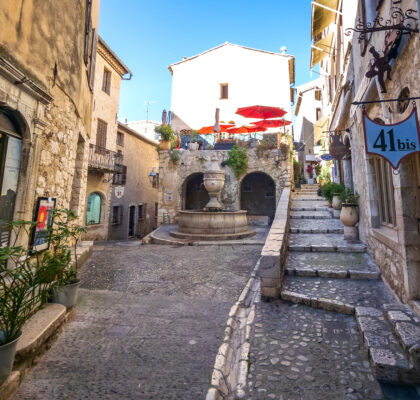
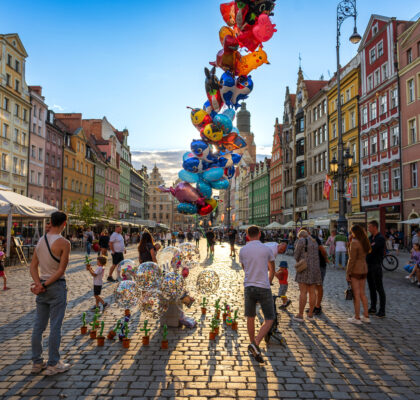
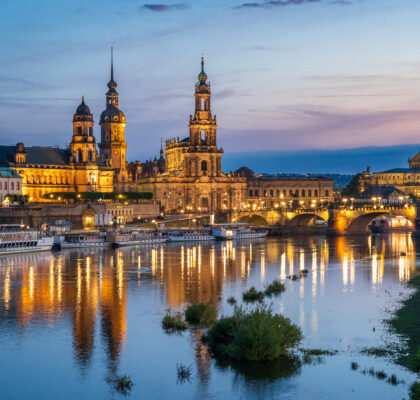
Another gorgeous post. What drives where you go?
Hi Chris. It’s me… I do all the driving 😉 . For this trip it was mainly the parts of Europe we haven’t been to before (Luxembourg, Switzerland, Liechtenstein, Slovakia, Norway), or countries we like but haven’t visited some areas (Southern Germany & Austria, Eastern & Northern Poland). After that it’s searching for interesting places to visit (picturesque locations, UNESCO sites, Roman ruins, abandoned sites, etc) and put them as dots on Google maps. From those dots we figure out the best route to see as many of those sites as possible.
Pingback: Abandoned Places: Our Favorite Travel Spots! - D2 Detours